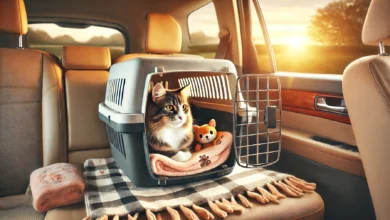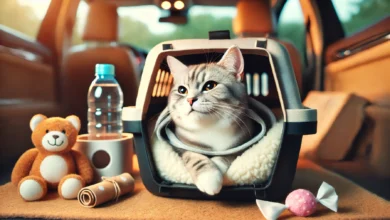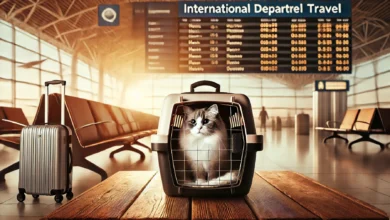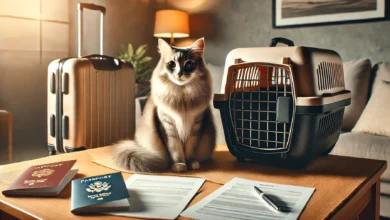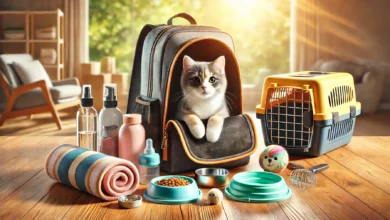How to Manage Cat Health During Travel
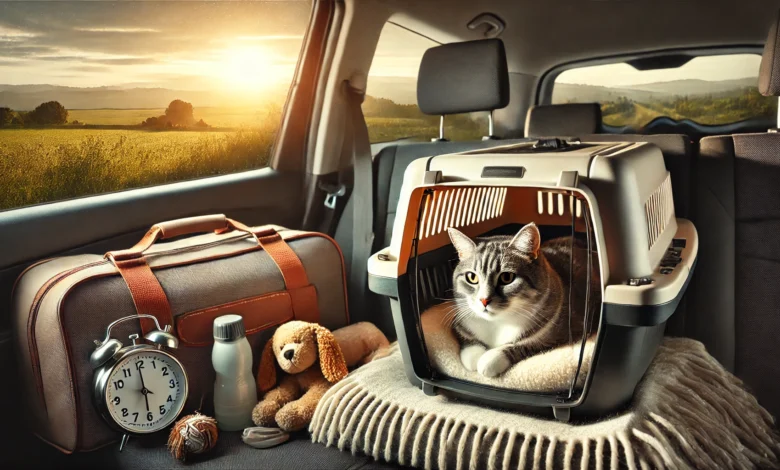
Traveling with cats can be quite a brilliant adventure, but you face all sorts of challenges on the way.
It is very important that you take precautions to ensure your feline friend stays healthy in the process for an easy and smooth ride.
No matter the distance, whether it’s a short road trip or a long international flight, your cat’s health and comfort always have to come first.
In this post, we’ll consider all you should know to keep your cat healthy while traveling—from preparing for your journey down to post-travel care.
So, if you plan a trip with your furry friend, look no further!
Table of Contents
Preparing Your Cat for Travel: Health Essentials
Before taking your cat on any trip, you want to ensure that your cat is healthy and ready for the journey.
Like humans, cats can experience stress, anxiety, and other health-related problems while traveling.
By planning ahead, you can minimize potential issues and ensure that your cat has a safe, comfortable journey.
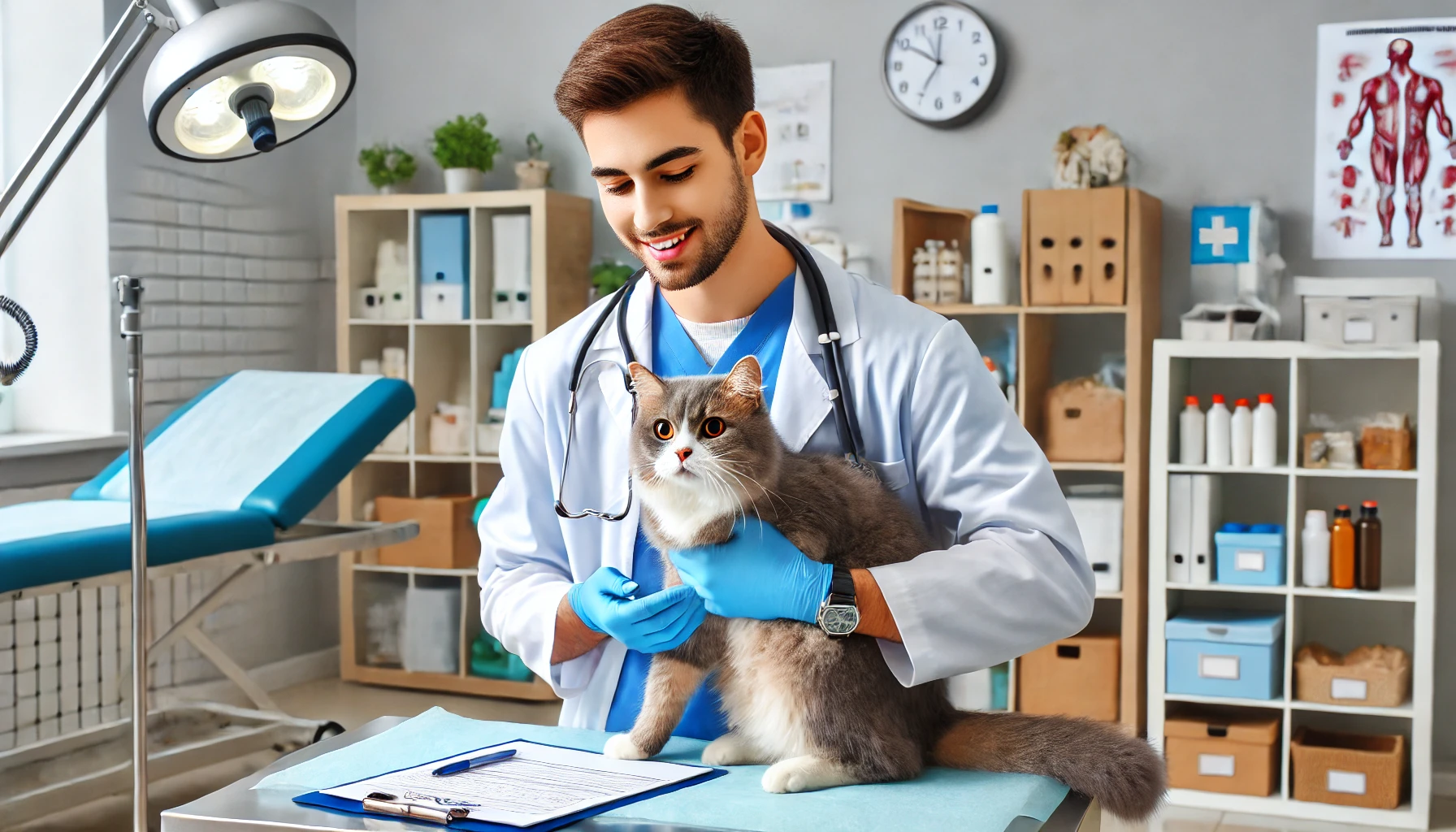
Visit Your Veterinarian Before Travel
One of the most important steps to prepare your cat for travel is scheduling a visit with the veterinarian.
This will ensure your cat is fit to travel and that vaccinations are current.
A complete check-up may reveal any adverse health conditions, such as susceptibility to infection or injury, that could be worsened by travel.
Your veterinarian may also recommend ways to minimize travel stress or prescribe medication if your cat suffers from anxiety or motion sickness.
- Ensure your cat is current on vaccinations, particularly if you are traveling to areas that require additional vaccines.
- Consult your vet about potential travel stressors and the available options, including calming products or medications safe for travel.
- Get a copy of your cat’s health records to take with you, especially if you are crossing borders or staying at pet-friendly accommodations.
Taking these precautions ensures that your cat is well-prepared for the trip ahead.
It is always better to identify potential health issues early and have a plan to manage them effectively.
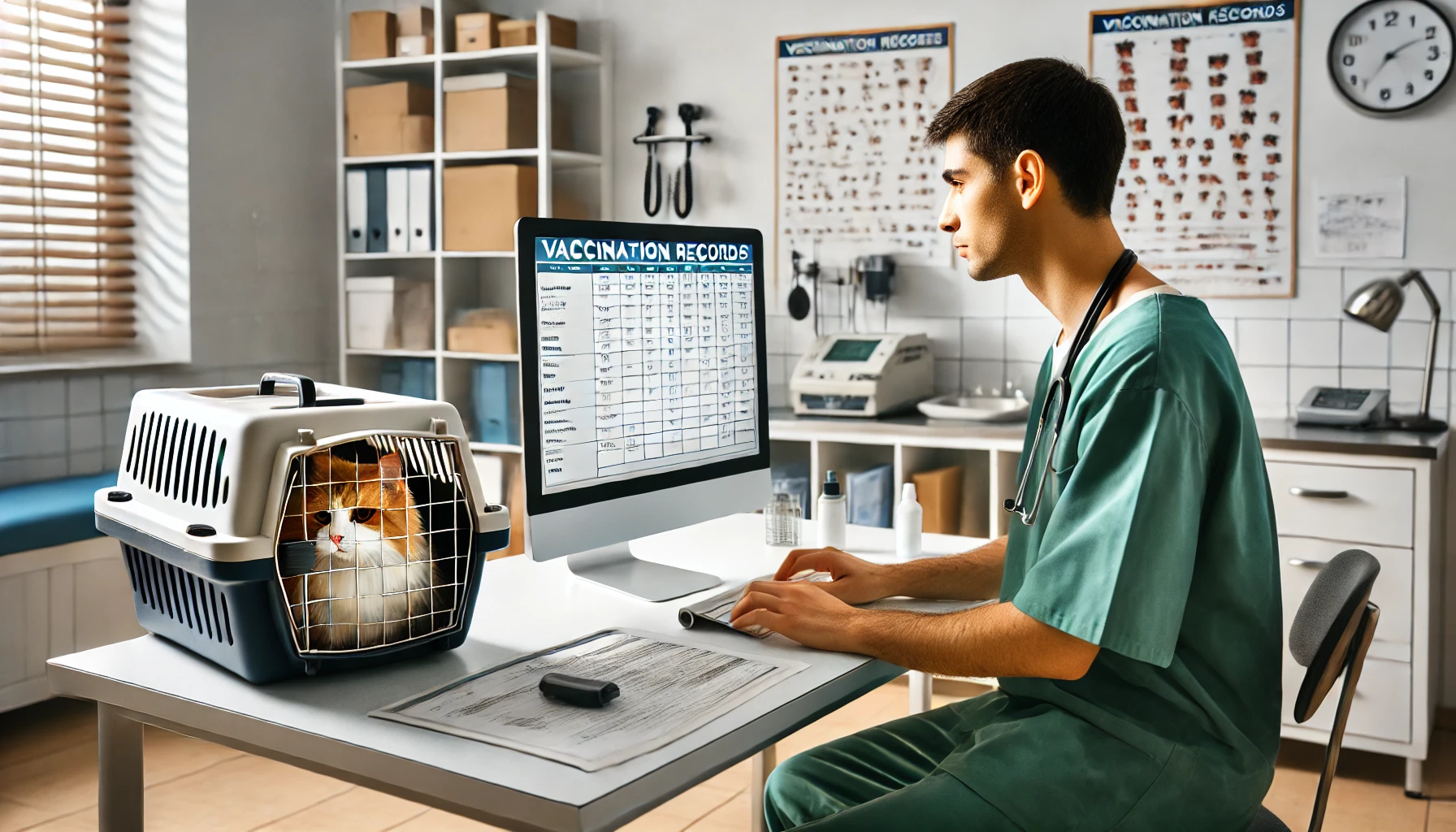
Update Vaccinations and Health Records
Keeping vaccinations up to date in preparation for travel is essential for maintaining your cat’s health.
This not only protects your cat from various diseases but also meets the vaccination requirements of most destinations, airlines, and accommodations.
Ensure that your cat is fully protected, especially if you are traveling internationally, where specific vaccines may be required.
- Core vaccinations for cats include rabies, feline distemper, and feline herpesvirus. Check with your vet to ensure all are up to date.
- Request a copy of your cat’s health certificate, which is often required for air travel and border crossings.
- Consider microchipping your cat if you haven’t already, as this can serve as a safety measure in case your cat gets lost during the journey.
Updating your cat’s health records and vaccines not only keeps them safe but also prevents any issues that may arise from health requirements during travel.
It’s a small step that can make a big difference in ensuring a smooth trip.
Ensure your cat is in good health before traveling, minimizing potential health issues during the journey.
- Consult your veterinarian for any health concerns and ensure vaccinations are up-to-date.
- Address potential stressors with calming techniques or medication if necessary.
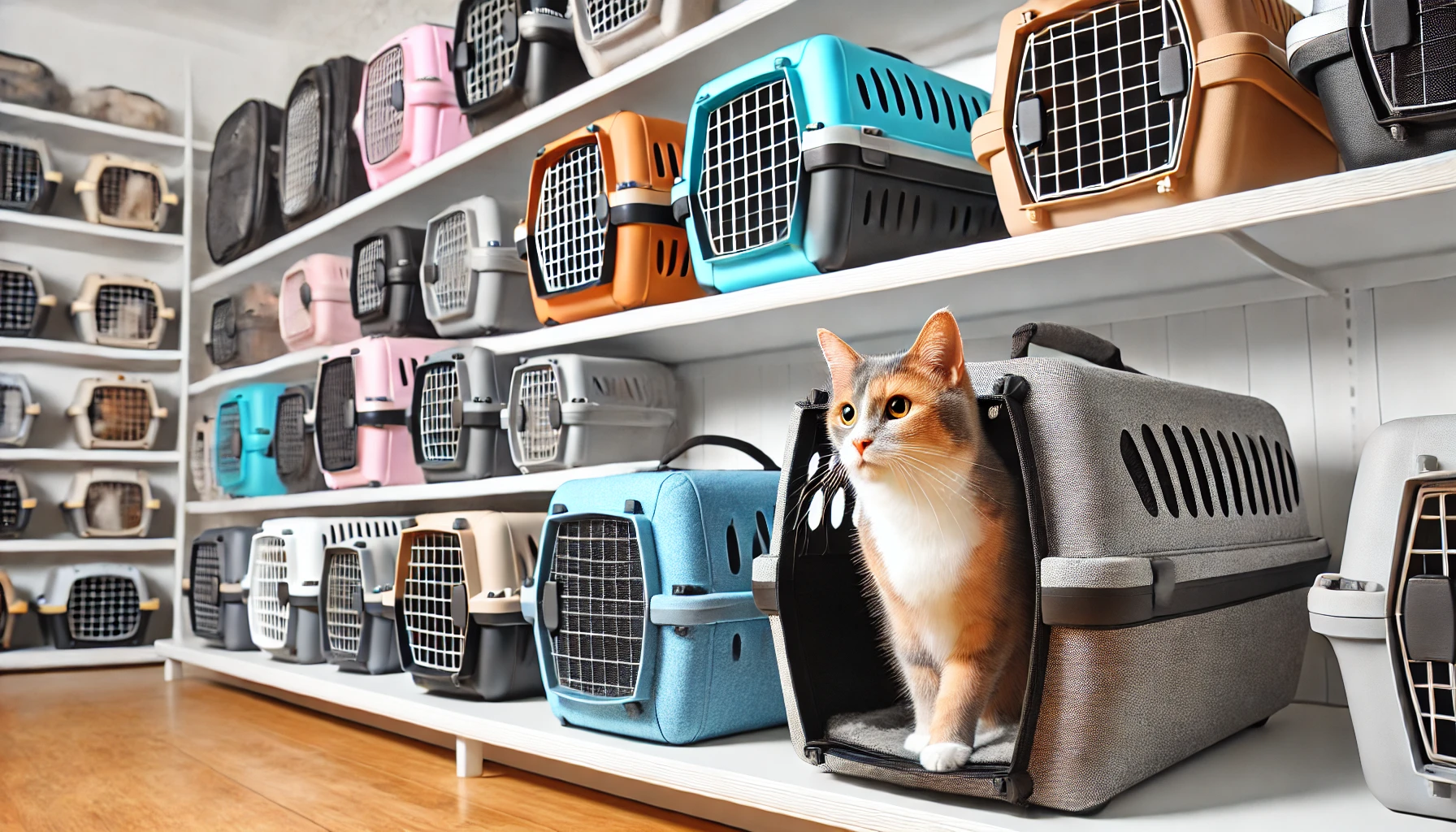
Choosing the Right Travel Carrier for Your Cat’s Health
One of the most important decisions for any travel with your cat will be the type of travel carrier that you use.
Your choice of travel carrier will have a great impact on the comfort and health of your cat during the trip.
A poorly designed or uncomfortable carrier can cause stress, anxiety, and even physical harm to your cat.
Therefore, it is essential to choose one that is safe and comfortable for your feline friend.
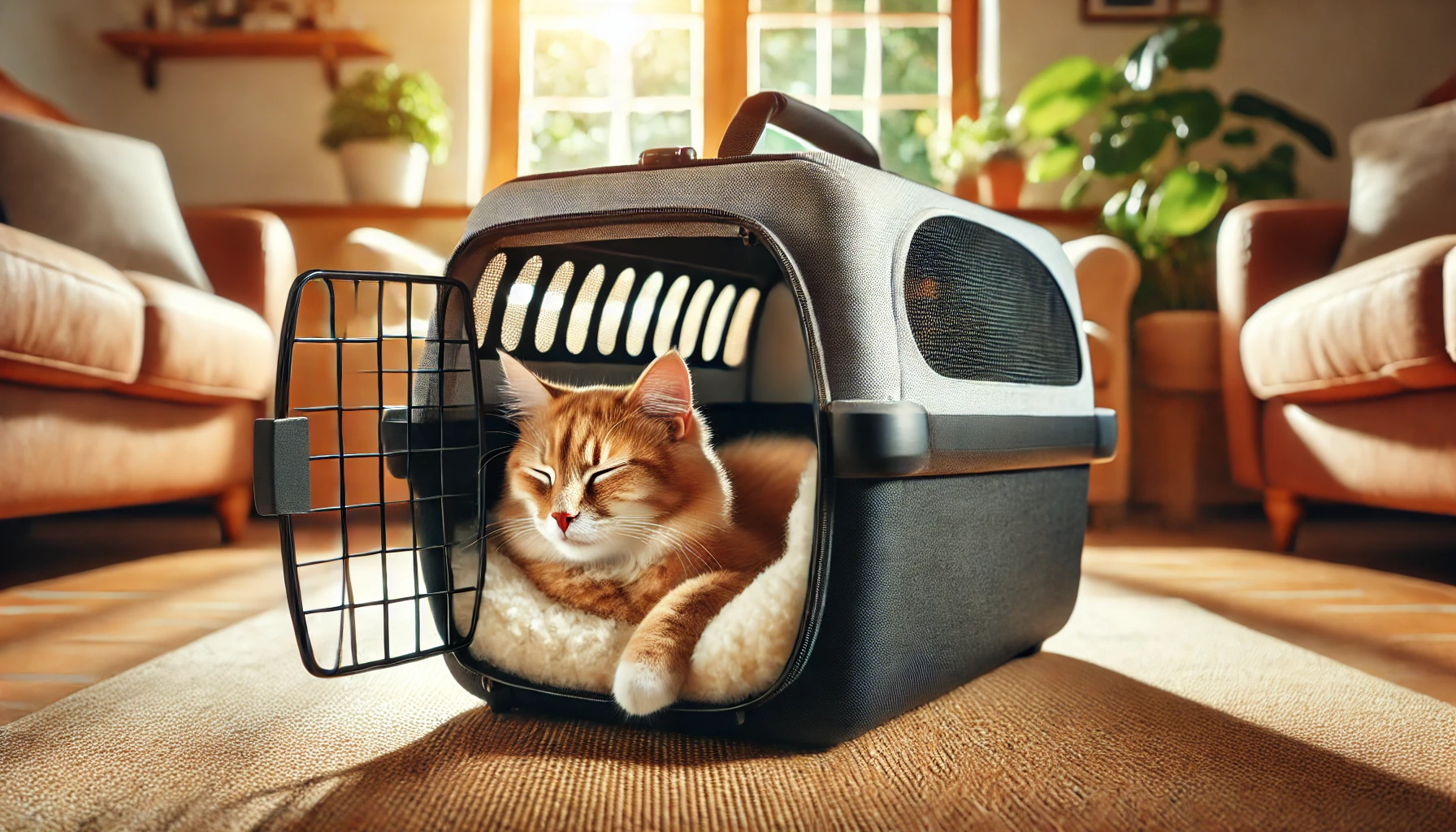
Choosing a Comfortable and Safe Carrier
Your cat’s comfort should be a top priority when choosing a carrier.
Look for one that offers enough room for your cat to stand, turn, and lie down easily, but not so large that it makes them feel unsteady or insecure.
The right size will help keep your cat calm and safe throughout the journey.
Additionally, ensure that the carrier is made of strong materials and has a sturdy frame to protect your cat from sudden movements or bumps during travel.
- Choose a carrier that provides enough room for your cat to move but is not too large.
- Make sure the bottom of the carrier is soft and non-slip to keep your cat comfortable and secure.
- Select a carrier with padded walls or inserts to reduce stress from motion during travel.
- Ensure that the carrier meets airline or travel requirements if you are flying with your cat.
Some travel carriers come with built-in ventilation systems or mesh panels that allow airflow while keeping your cat enclosed and secure.
Cats can easily overheat, especially on long trips, so proper ventilation is essential to maintain their health.
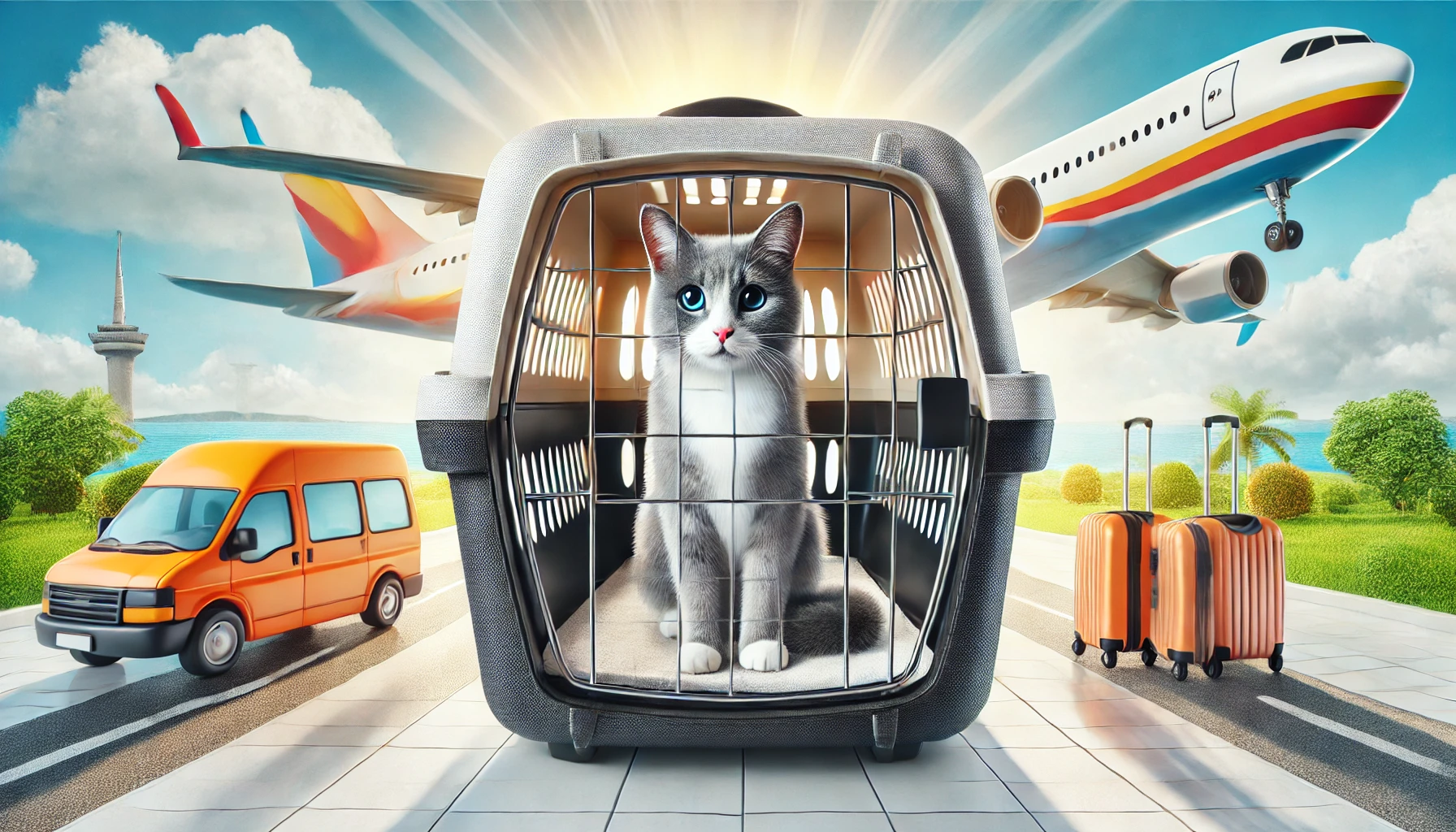
Providing Ventilation and Space
Ventilation is one of the key features that can ensure your cat’s comfort and health during travel.
A well-ventilated carrier will prevent your cat from overheating during car rides or flights.
Look for a carrier with mesh sides or panels that allow for free airflow.
This can also help reduce travel anxiety, as your cat will be able to see their surroundings, which may offer comfort.
- Look for carriers that have multiple ventilation panels for maximum airflow.
- Ensure the carrier has openings that allow your cat to look out while also protecting them from outside distractions.
- Avoid carriers made from plastic with limited ventilation options, as they can trap heat and make your cat uncomfortable.
Additionally, consider the overall space inside the carrier.
While your cat needs room to move around, carriers that are too large might make your cat feel insecure, as cats prefer cozy, enclosed spaces.
Finding the right balance between space and security is key to ensuring your cat’s health and comfort during travel.
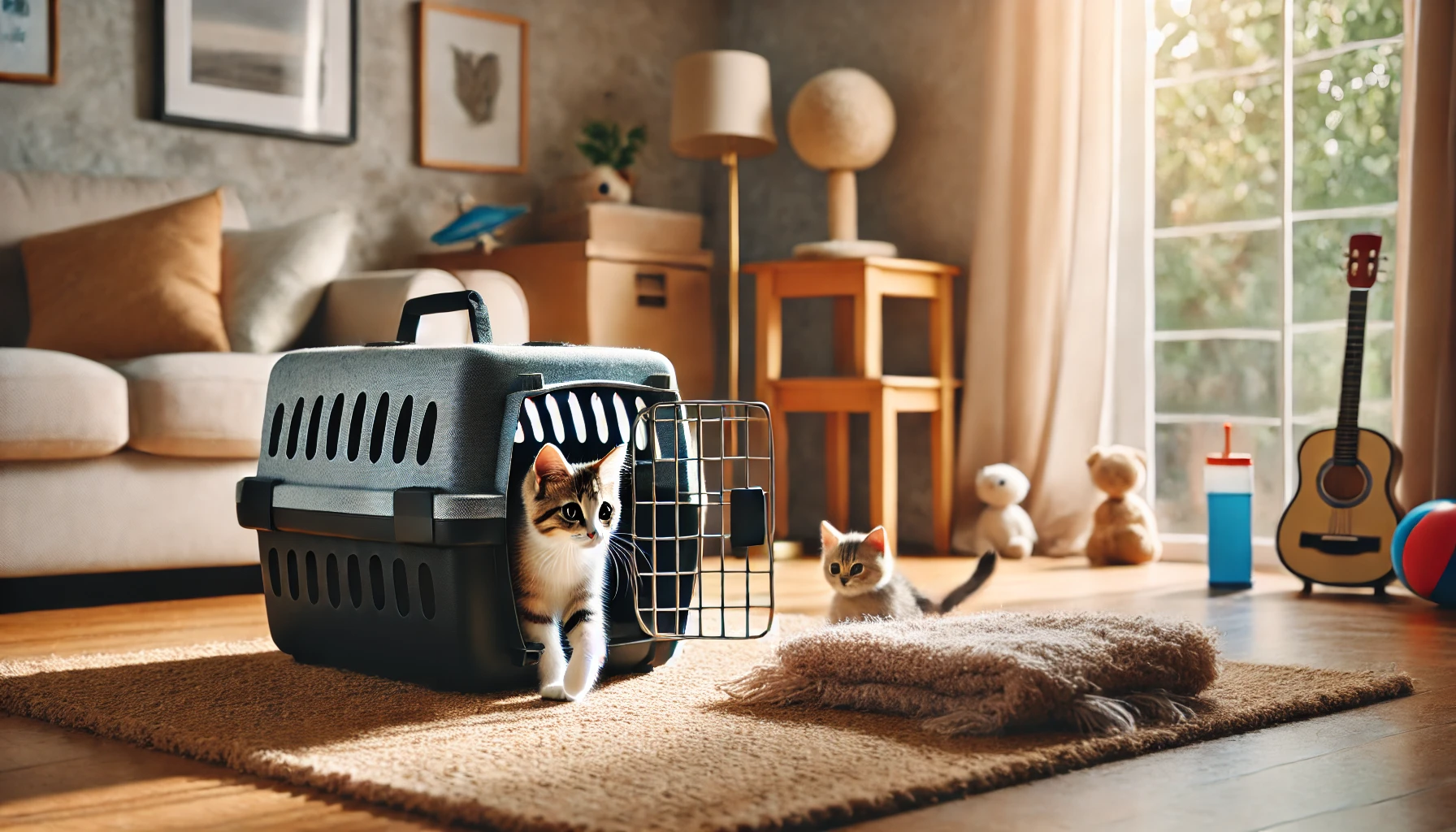
Introducing the Cat to the Carrier Gradually
Cats generally dislike sudden changes in their environment.
To ensure your cat feels comfortable during the journey, it is important to introduce them to the carrier well in advance of your trip.
Leave the carrier open in a familiar area of your home and allow your cat to explore it at their own pace.
You can place their favorite blanket or toys inside to make the carrier more inviting.
- Leave the carrier out in your home a few weeks before travel to allow your cat to get used to it.
- Place familiar items like bedding or toys in the carrier to create a sense of comfort and safety.
- Gradually introduce your cat to short trips in the carrier to reduce anxiety during longer journeys.
By familiarizing your cat with the carrier well in advance, you can help reduce their stress and ensure they feel safe and secure on the day of the trip.
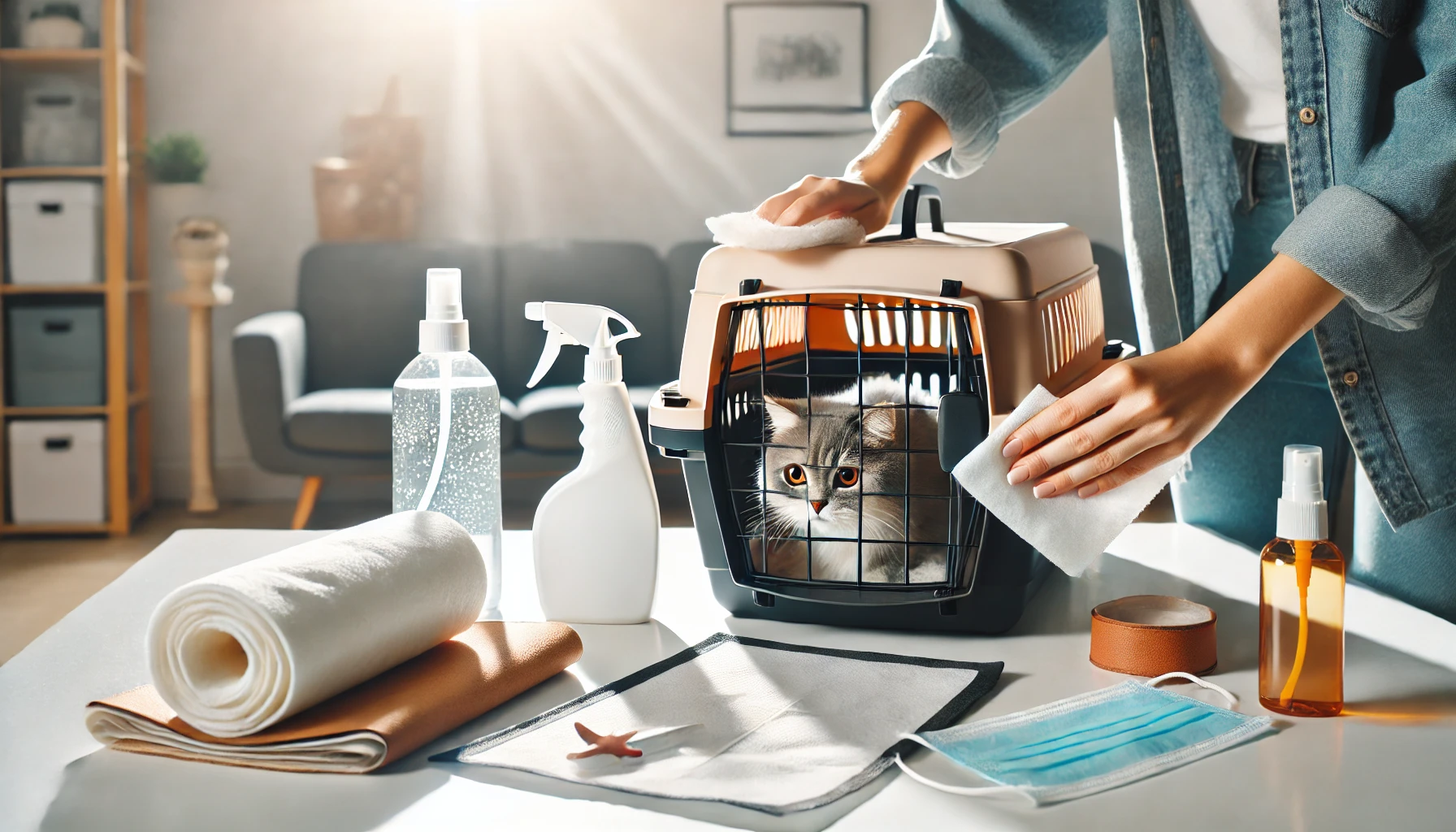
Hygiene in the Choice and Maintenance of a Travel Carrier
Hygiene is another important factor when it comes to selecting and maintaining a travel carrier.
A clean carrier is essential for your cat’s health, especially if they will be spending several hours inside.
Regularly clean the carrier before and after use to prevent the build-up of germs and bacteria.
Using a carrier liner can help manage any accidents your cat may have during the trip, and it is advisable to bring spare liners or wipes for long journeys.
- Clean the carrier thoroughly before and after each trip to remove bacteria and odors.
- Use washable and removable liners to keep the carrier fresh and hygienic.
- Carry cleaning wipes or disposable liners to handle any accidents during travel.
Maintaining a clean carrier is essential for your cat’s health while traveling.
With proper cleaning and preparation, your cat can have a safe and stress-free journey, and you can have peace of mind knowing they are traveling in a healthy and comfortable environment.
The right travel carrier is essential for your cat’s comfort and health during travel.
- Select a sturdy, well-ventilated carrier that is the correct size.
- Ensure your cat is familiar with the carrier before the trip.
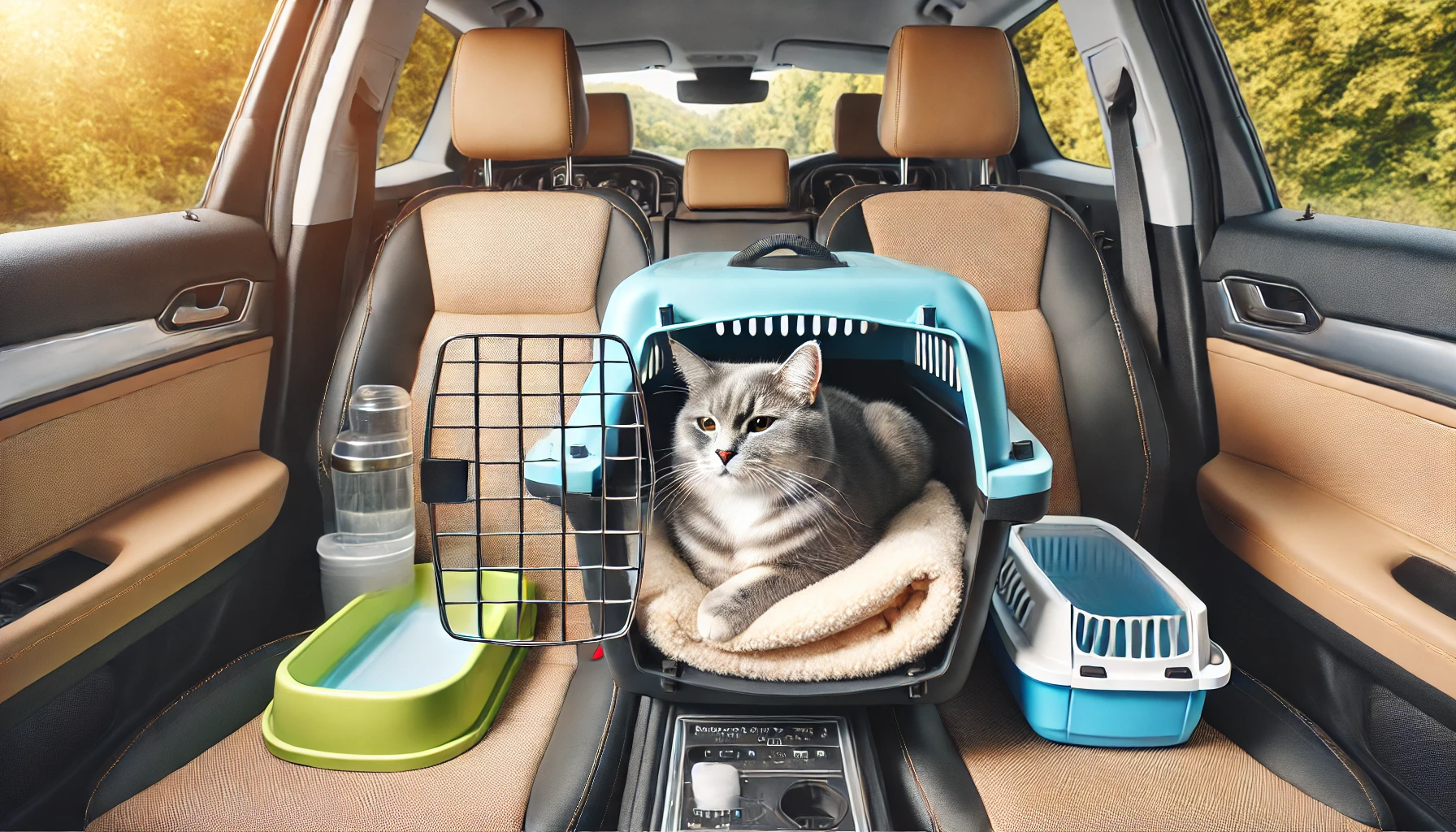
Health Tips for Long-Distance Car Travel with Cats
Long-distance car travel with cats can be an overwhelming experience; however, with proper preparation, you can ensure that your cat remains healthy and comfortable throughout the journey.
Long car rides may cause stress, dehydration, and other illnesses in your cat.
Therefore, there are important things to consider while driving to maintain your cat’s health.
A few simple health tips will make the trip easier for both you and your cat.
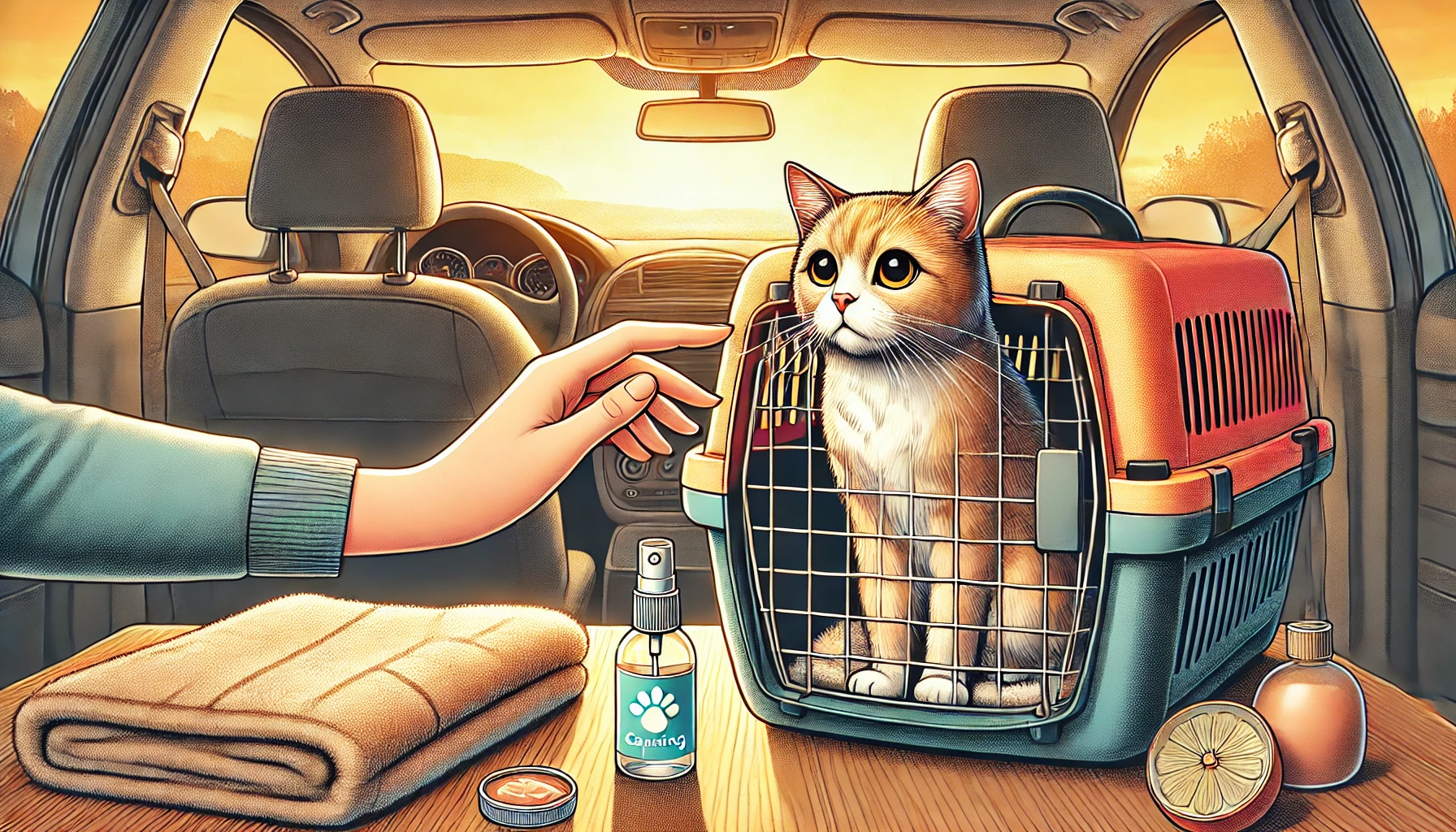
Managing Motion Sickness in Cats
Just like people, cats can suffer from motion sickness in cars.
Symptoms include drooling, vomiting, and lethargy.
You can help reduce your cat’s motion sickness by adjusting their feeding schedule before traveling or by using medications recommended by your veterinarian.
Feeding your cat a light meal several hours before traveling may prevent a full stomach from worsening nausea during the trip.
- Feed your cat a small, light meal at least 3-4 hours before traveling to reduce nausea associated with travel.
- Consider medications or natural remedies prescribed by your veterinarian to help manage motion sickness.
- Keep your cat comfortable and secure in their carrier to minimize anxiety and reduce symptoms of motion sickness.
This will help minimize anxiety in your cat during long drives, making the journey more manageable.
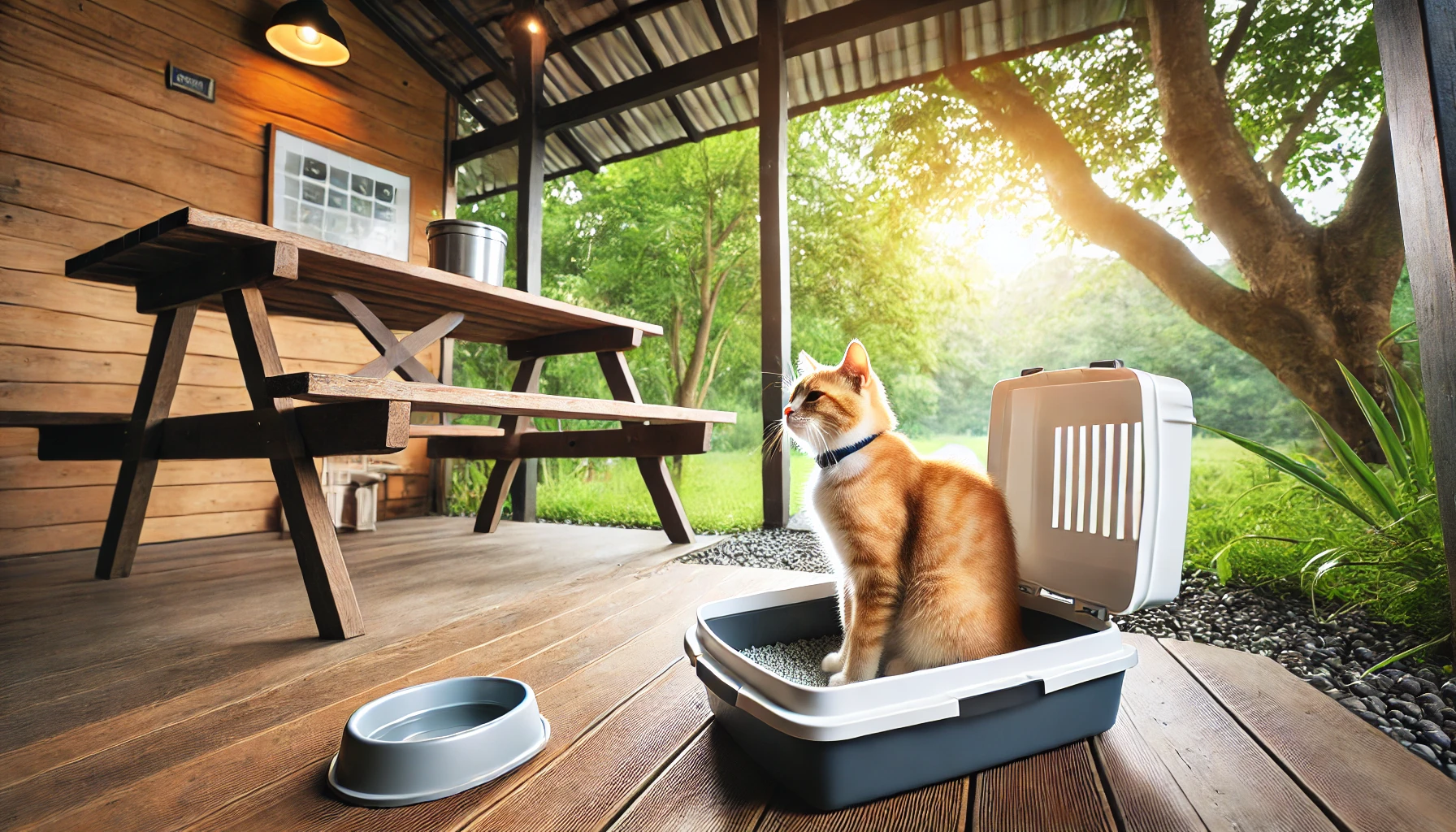
Regular Stops for Water and Litter
Keeping your cat hydrated is essential for their health during a long road trip.
Cats are prone to dehydration, especially in warm cars, so it’s important to offer water during regular breaks.
Additionally, your cat needs frequent opportunities to use the litter box.
Plan stops at pet-friendly rest areas where your cat can take a break from the carrier, drink water, and use the litter box comfortably.
- Offer water to your cat every 2-3 hours during the trip.
- Take a portable water bowl or a non-spill travel bowl to make it easier for your cat to drink while traveling.
- Bring a portable litter box for your cat to use during stops, and ensure it is easily accessible for them to use comfortably.
Regular breaks not only allow your cat to rehydrate but also give them a chance to stretch and move, which is important for their overall comfort on long journeys.
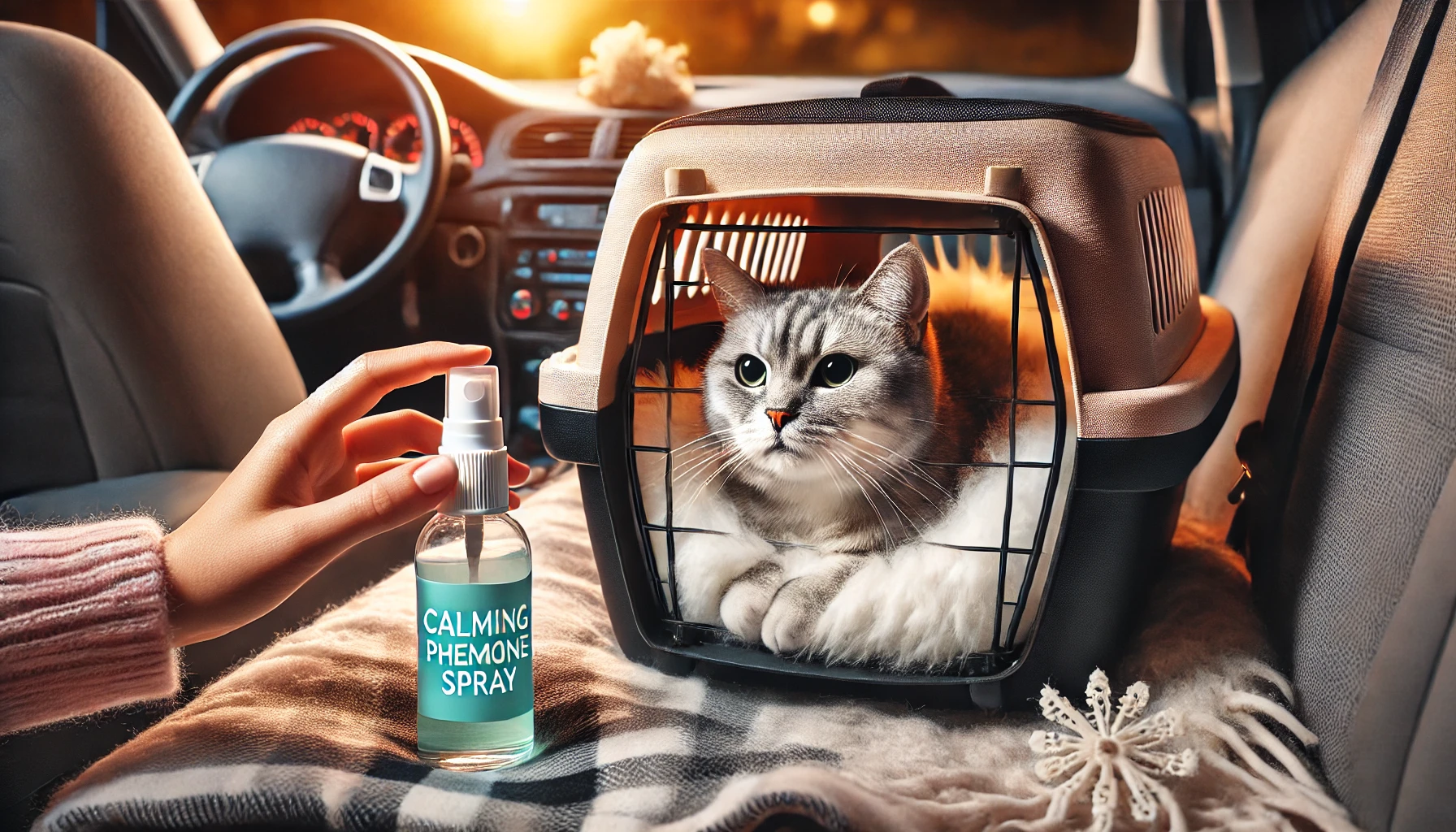
Keeping Your Cat Calm During the Journey
Cats are often sensitive to new environments, and a moving car can be stressful for them.
To keep your cat calm, try using calming sprays or pheromone diffusers that contain natural calming signals.
These products can help reduce anxiety and make the trip less stressful for your cat.
Additionally, playing soft music or maintaining a quiet, stable atmosphere in the car can create a more soothing environment.
- Use calming sprays or pheromone products like Feliway to help your cat feel more relaxed in their carrier.
- Minimize external stimuli by keeping the car quiet and steady for your cat.
- If your cat is sensitive to outside stimuli, you can cover the carrier with a light blanket. Just ensure there is enough ventilation.
By creating a relaxed environment and using anxiety-reducing products, you can help your cat feel secure during the trip, making the travel experience easier for both of you.
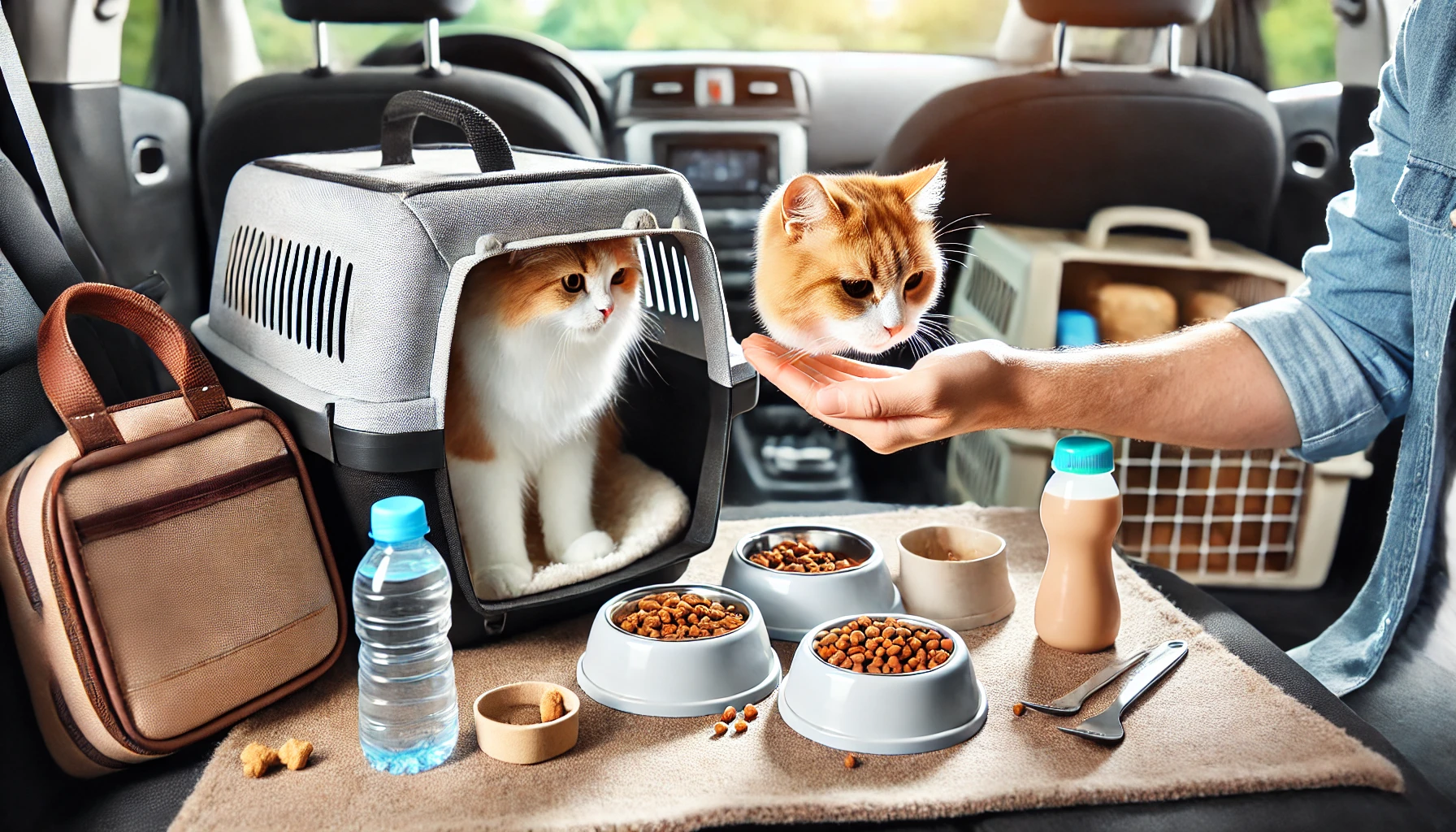
Best Feeding Practices Before and During Travel
Feeding your cat properly before and during a long trip is important for their health.
It’s best not to feed your cat right before the trip, as a full stomach can contribute to motion sickness.
Instead, feed them a small meal a few hours before departure.
During the trip, you can offer light snacks or treats during stops, but avoid feeding them a full meal until you’ve reached your destination.
- Feed your cat a light meal a few hours before departure to prevent motion sickness.
- Avoid feeding your cat while the car is moving, as this can cause nausea.
- Offer light snacks or treats during breaks, but save full meals for when you’ve arrived at your destination.
By following these feeding practices, you can help your cat avoid discomfort and maintain their health during long car journeys.
Keep your cat comfortable during long-distance car travel by managing motion sickness and dehydration.
- Plan regular stops to offer water and a litter box break.
- Feed your cat a light meal a few hours before traveling to reduce nausea.
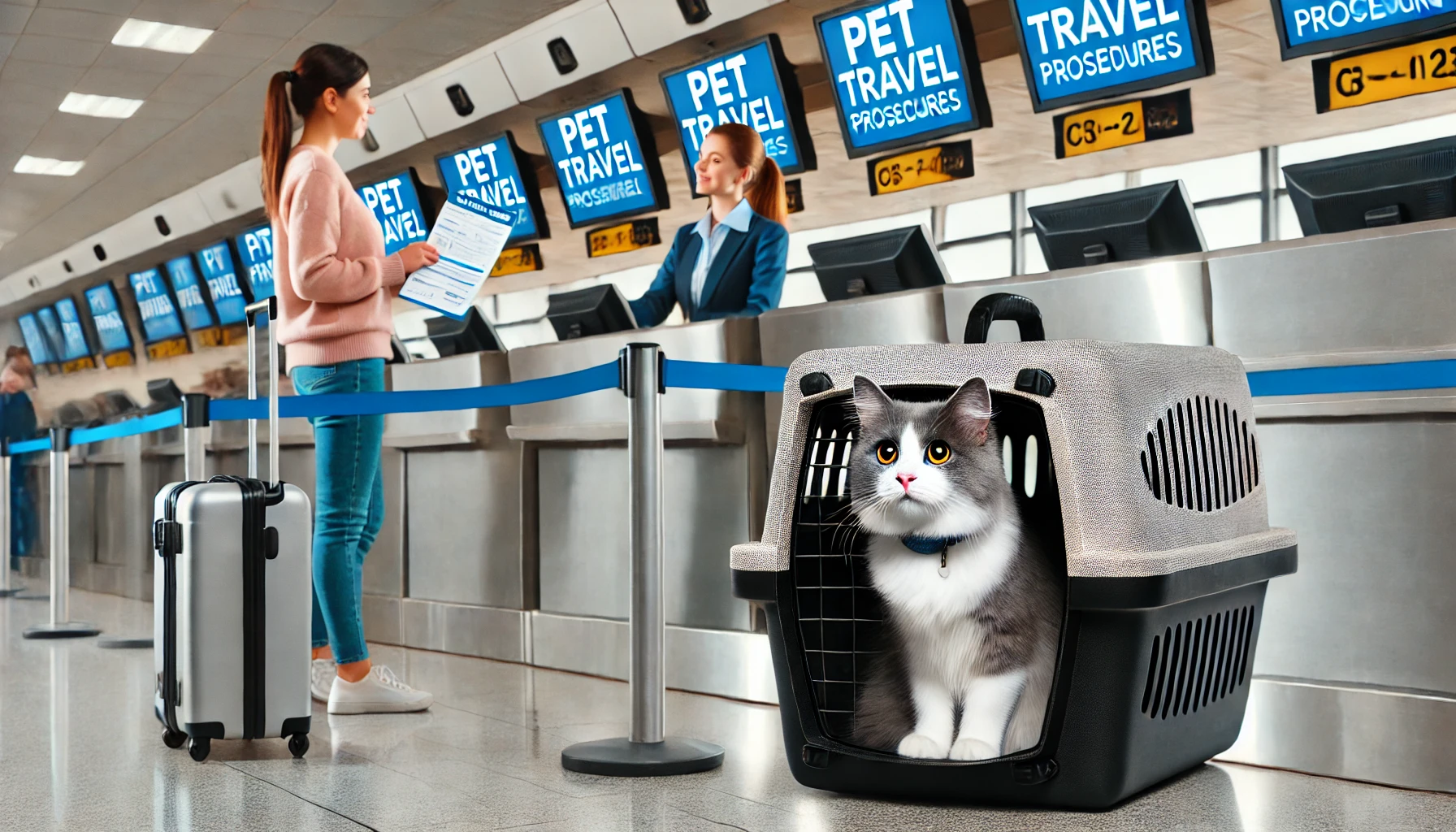
Maintaining Cat Health During Air Travel
Flying can be an awfully stressful event—not only for human beings but also for cats.
Extra attention and preparation are necessary for the well-being of your feline friend during air travel.
Ensuring that flying is as safe and comfortable as possible for your cat requires careful consideration of several key factors, from understanding airline health requirements to keeping your cat calm in the air.
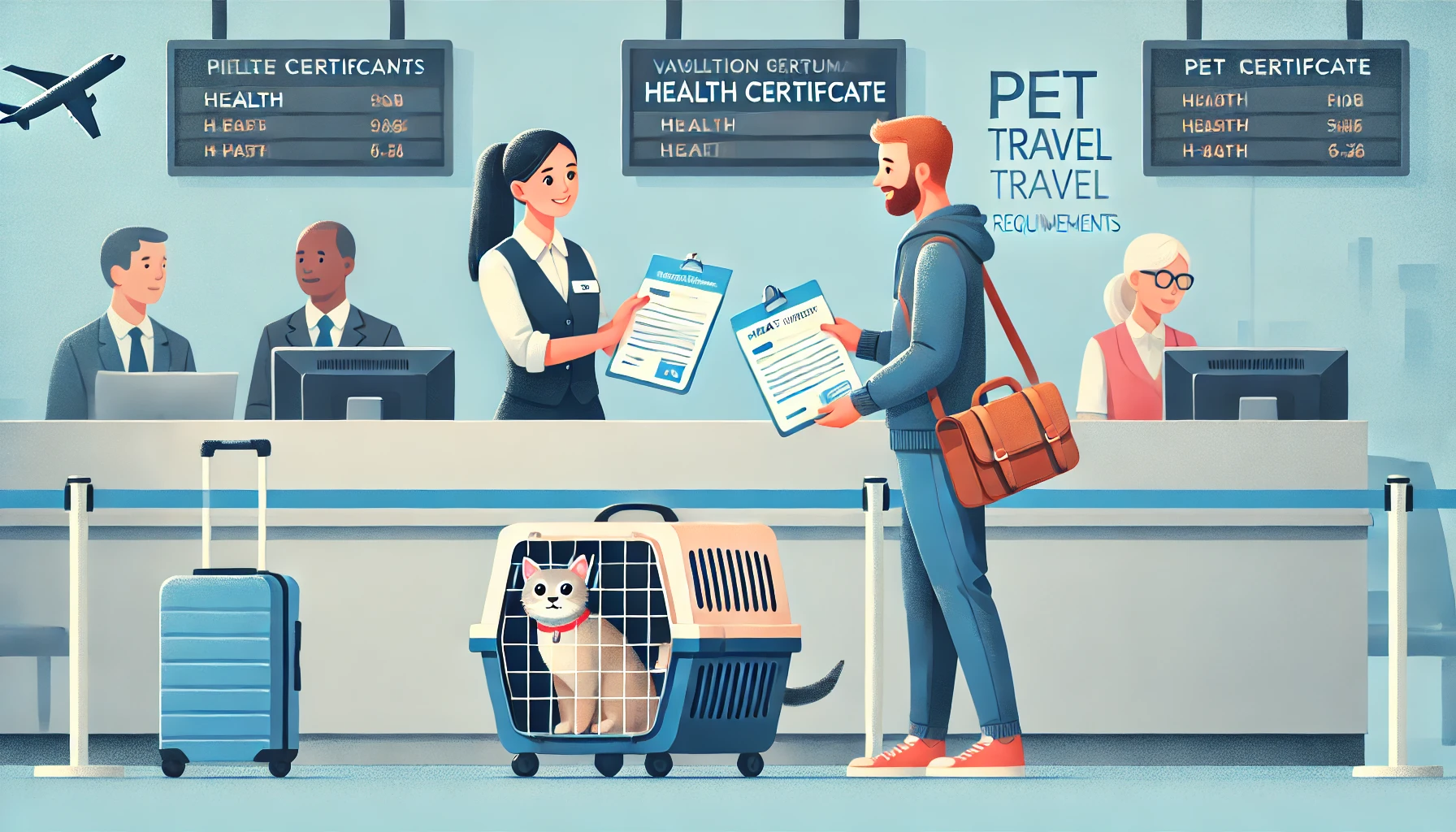
Understanding Airline Health Requirements for Cats
It’s essential to start by acquainting yourself with the health requirements set by your airline for traveling with pets.
Most airlines have strict regulations regarding vaccinations, health certificates, and carrier guidelines.
Meeting these requirements is crucial to avoid last-minute complications.
Ensure that your cat’s vaccinations are up to date, and have a health certificate from your veterinarian.
- Check the vaccination and health certificate requirements in the airline’s pet travel policy.
- Keep your cat up to date with necessary vaccinations, which often include rabies and feline distemper.
- Have your vet issue a health certificate within the timeframe required by the airline, typically no more than 10 days before your flight.
By meeting these requirements, you can avoid potential issues when traveling with your cat and ensure a smooth check-in process.
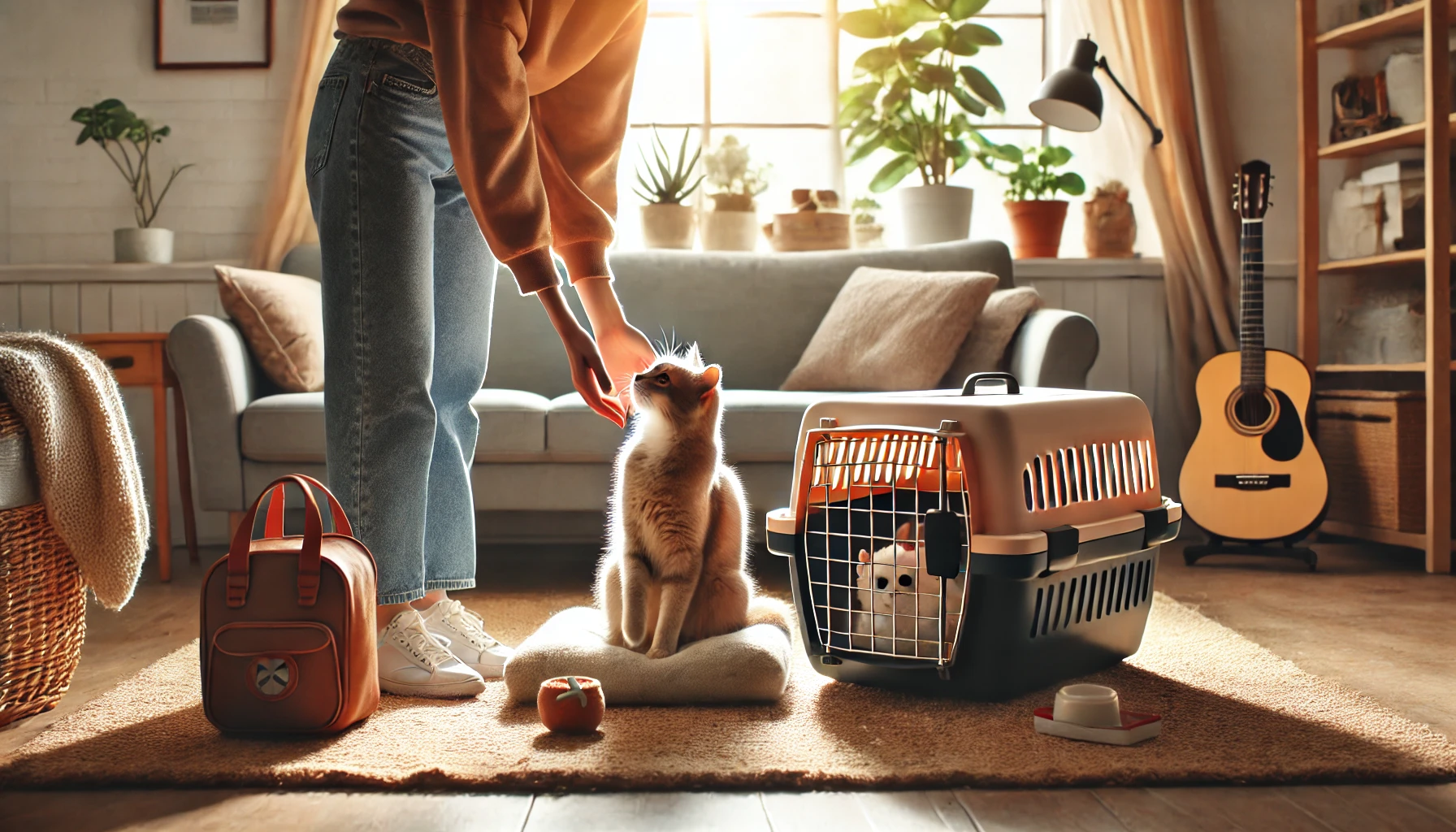
How to Prepare Your Cat for Flying
Preparing your cat for air travel involves more than just packing their carrier.
Begin by getting your cat accustomed to their travel carrier well in advance.
Leave the carrier open in a familiar place so your cat can explore and become comfortable with it.
Additionally, ensure that the carrier meets airline size requirements and provides adequate ventilation.
Taking your cat on short trips in the carrier around town can also help them get used to the sensation of traveling.
- Let your cat get used to the travel carrier by leaving it open in your home prior to the flight.
- Ensure the carrier is the correct size according to airline requirements and provides proper ventilation.
- Take your cat on short trips in the carrier to get them used to traveling, which can reduce anxiety during flights.
Proper preparation will significantly help reduce your cat’s stress and ensure they remain comfortable during air travel.
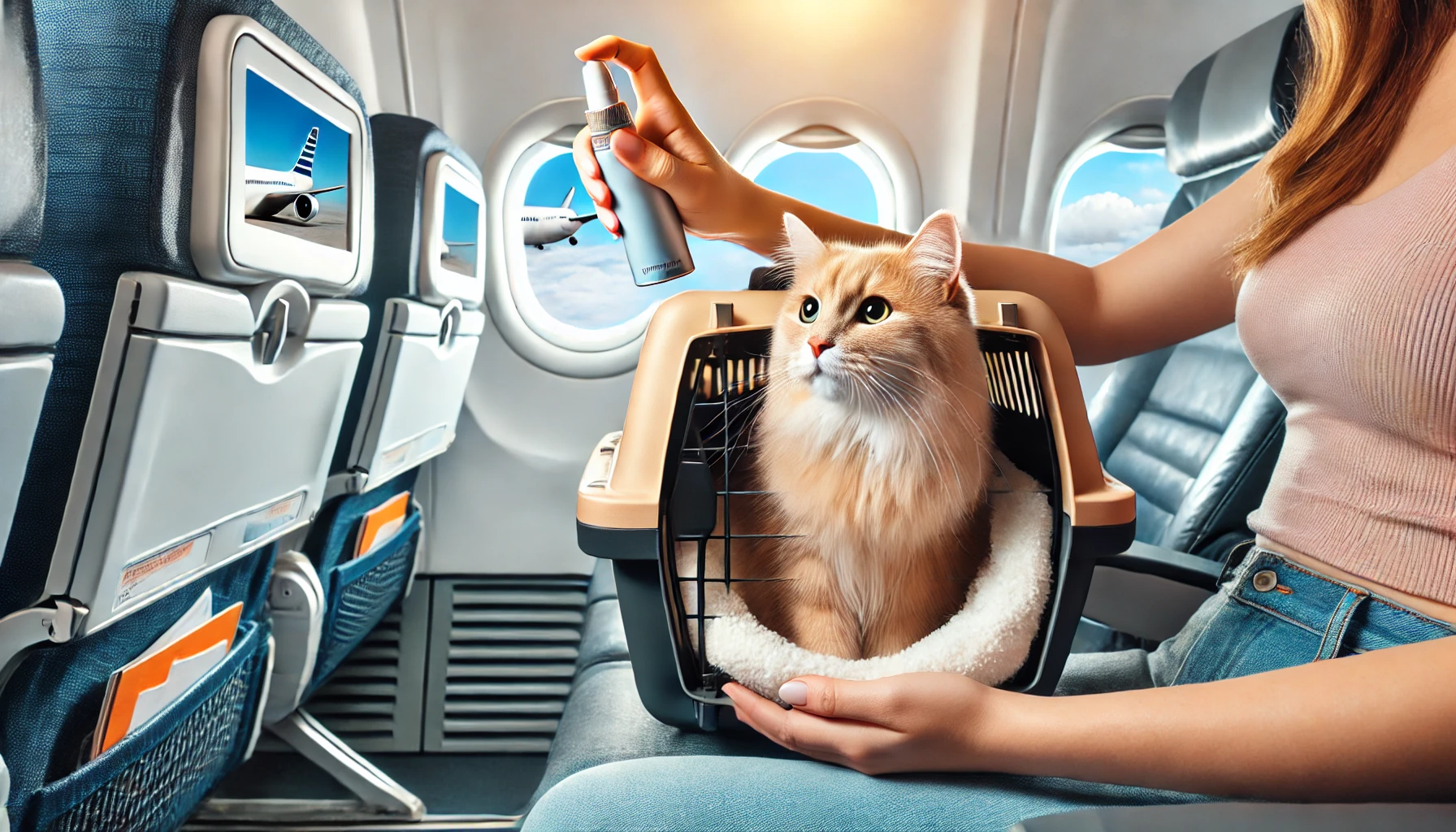
Managing Flight Stress and Anxiety in Cats
Flying can be particularly stressful for cats, especially in unfamiliar environments.
To minimize stress, you can use calming products such as pheromone sprays or natural supplements to help relax your cat.
If your cat gets particularly anxious, your veterinarian may prescribe sedatives or anti-anxiety medications specifically for air travel.
- Try calming sprays such as Feliway or natural supplements to help relax your cat during the flight.
- Consult your veterinarian about the possibility of using light sedatives or anxiety medications if your cat exhibits severe stress.
- Lightly drape the carrier with a blanket for added security, but ensure there is sufficient ventilation.
Minimizing your cat’s stress during the flight is crucial for their health and comfort.
By taking the right steps, you can keep them calm and relaxed throughout the journey.
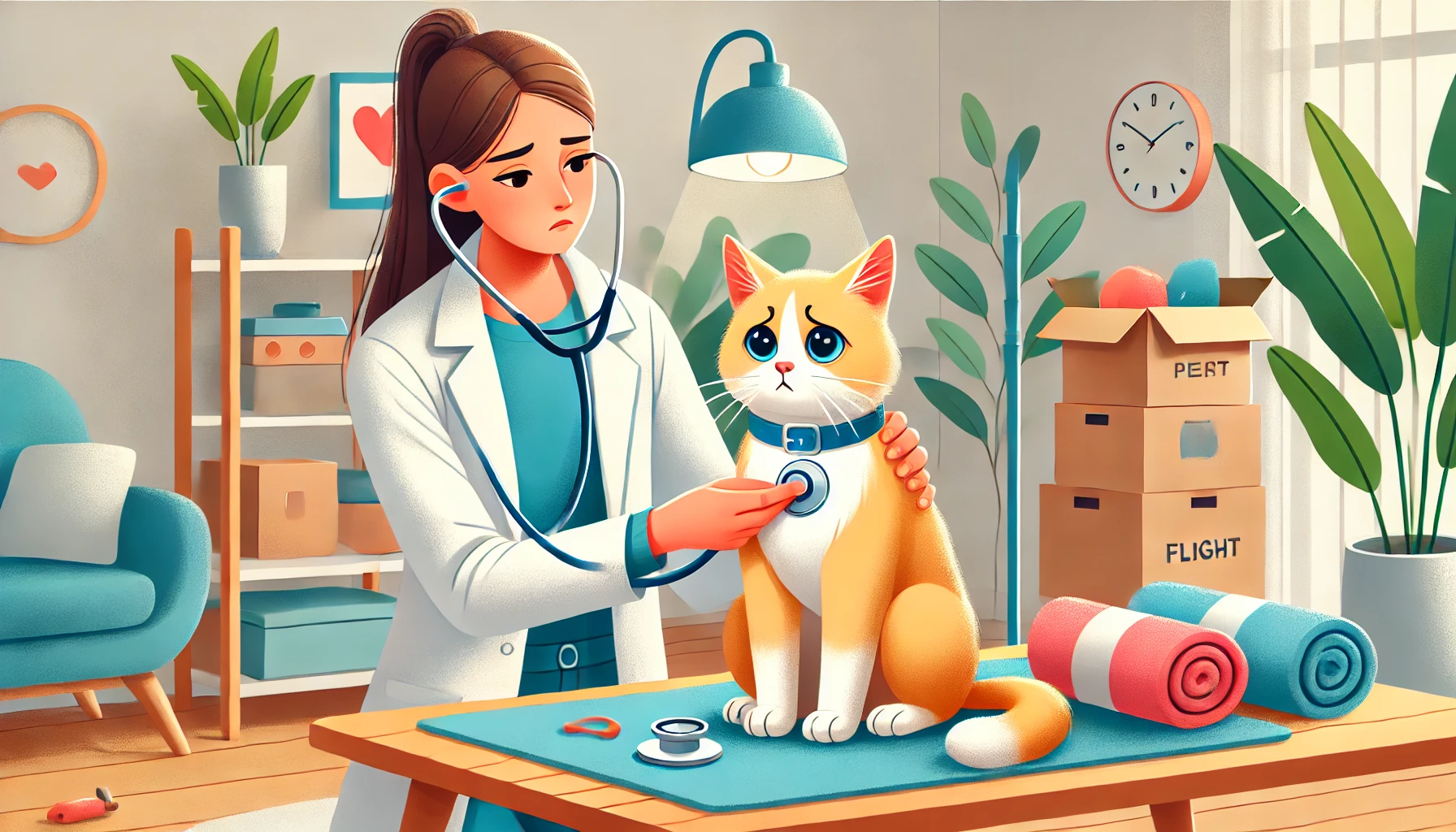
Post-Flight Health Checks for Your Cat
Once you’ve arrived at your destination, it’s important to check on your cat’s health.
Look for any signs of stress or discomfort, such as heavy panting, drooling, or lethargy.
If the flight was long, provide your cat with immediate access to fresh water and a litter box.
If your cat exhibits any signs of illness or distress after the flight, contact your veterinarian for advice.
- After the flight, carefully check for signs that your cat might be stressed or ill, including lethargy, panting, and drooling.
- Offer your cat water and immediate access to a litter box upon arrival.
- If your cat exhibits any unusual behavior or symptoms, consult your veterinarian post-flight.
These post-flight precautions will help ensure that your cat stays healthy and recovers quickly after air travel.
Air travel can be stressful for cats. Preparing properly will minimize health risks and stress.
- Ensure you meet all airline health and carrier requirements.
- Use calming sprays or veterinarian-recommended sedatives to ease anxiety.
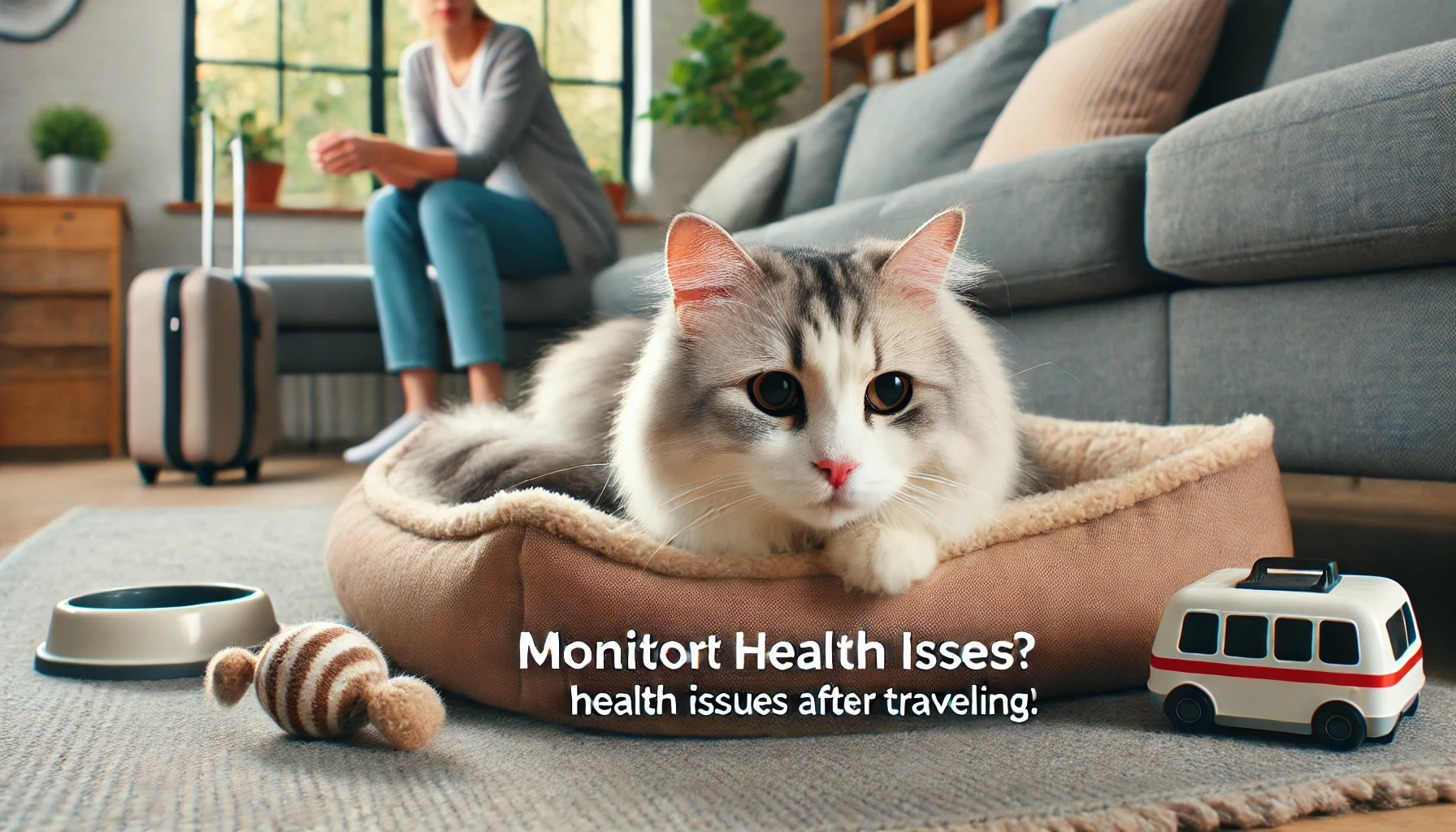
Health Issues to Look Out for in Your Cat After a Trip
After a long journey, whether by road or air, your cat’s health and well-being should be your top priority.
Travel can be extremely exhausting for your cat, and it’s important to closely monitor them for signs of stress, illness, or discomfort once the trip is over.
Knowing what to look for and how to help your cat recover after traveling will go a long way toward returning them to their normal, happy self as soon as possible.
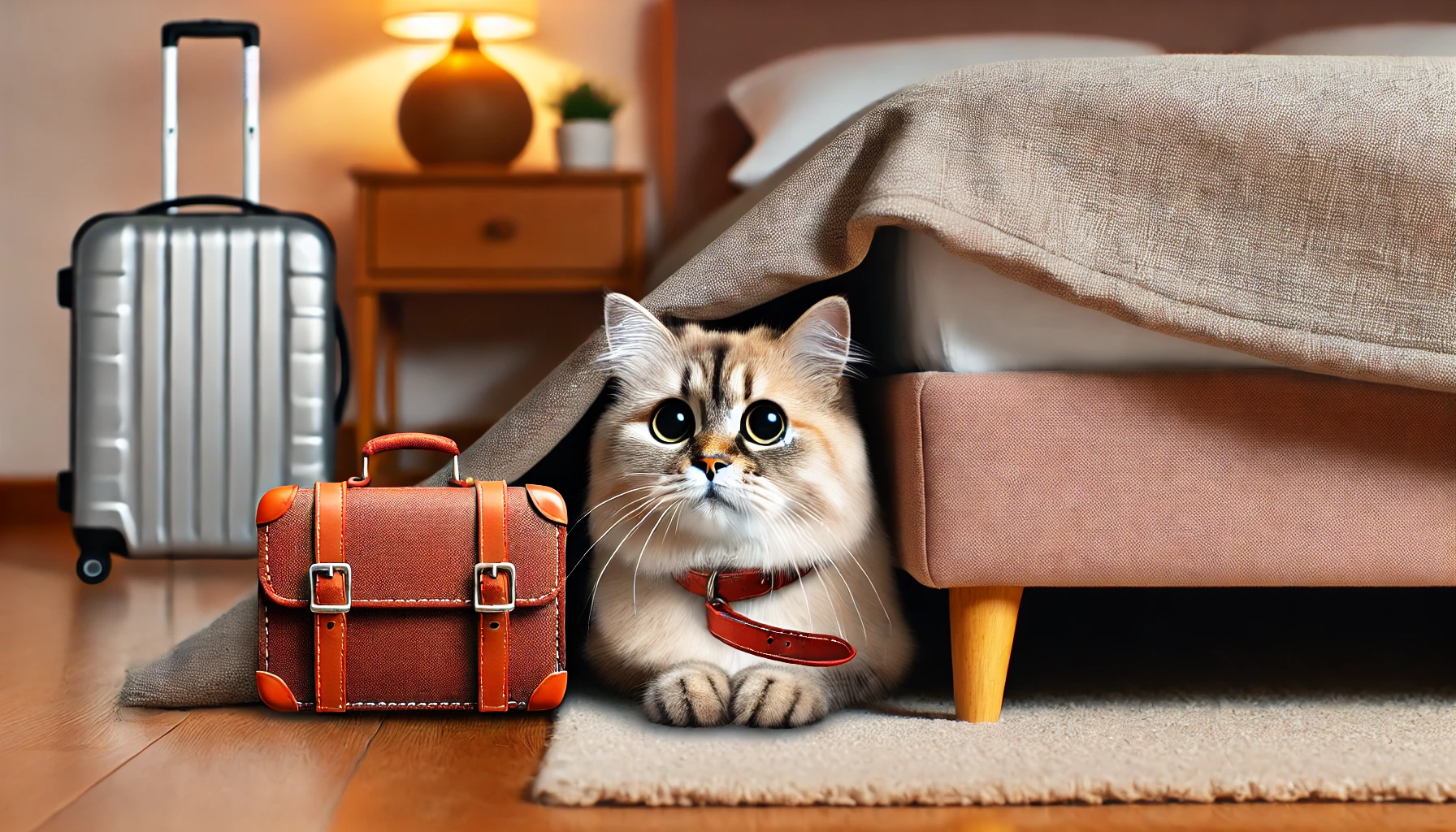
Signs of Stress or Sickness After Traveling
Your cat might experience stress or even illness after traveling, especially if the journey was long or particularly stressful.
Look for signs such as lethargy, changes in appetite, excessive grooming, or hiding.
These behaviors may indicate that your cat is feeling overwhelmed or unwell.
- Lethargy: If your cat is acting extremely tired or showing low energy during and after the trip, it could be a sign of illness or stress.
- Appetite changes: Watch for changes in your cat’s appetite, such as refusing food or overeating.
- Excessive grooming: Cats often groom themselves to cope with stress, so if your cat is grooming excessively, it may be a sign of anxiety.
- Hiding: If your cat is hiding more than usual, this may indicate that they are feeling anxious or unwell due to the trip.
If any of these signs continue for more than a day or two, it’s a good idea to contact your veterinarian for further advice.
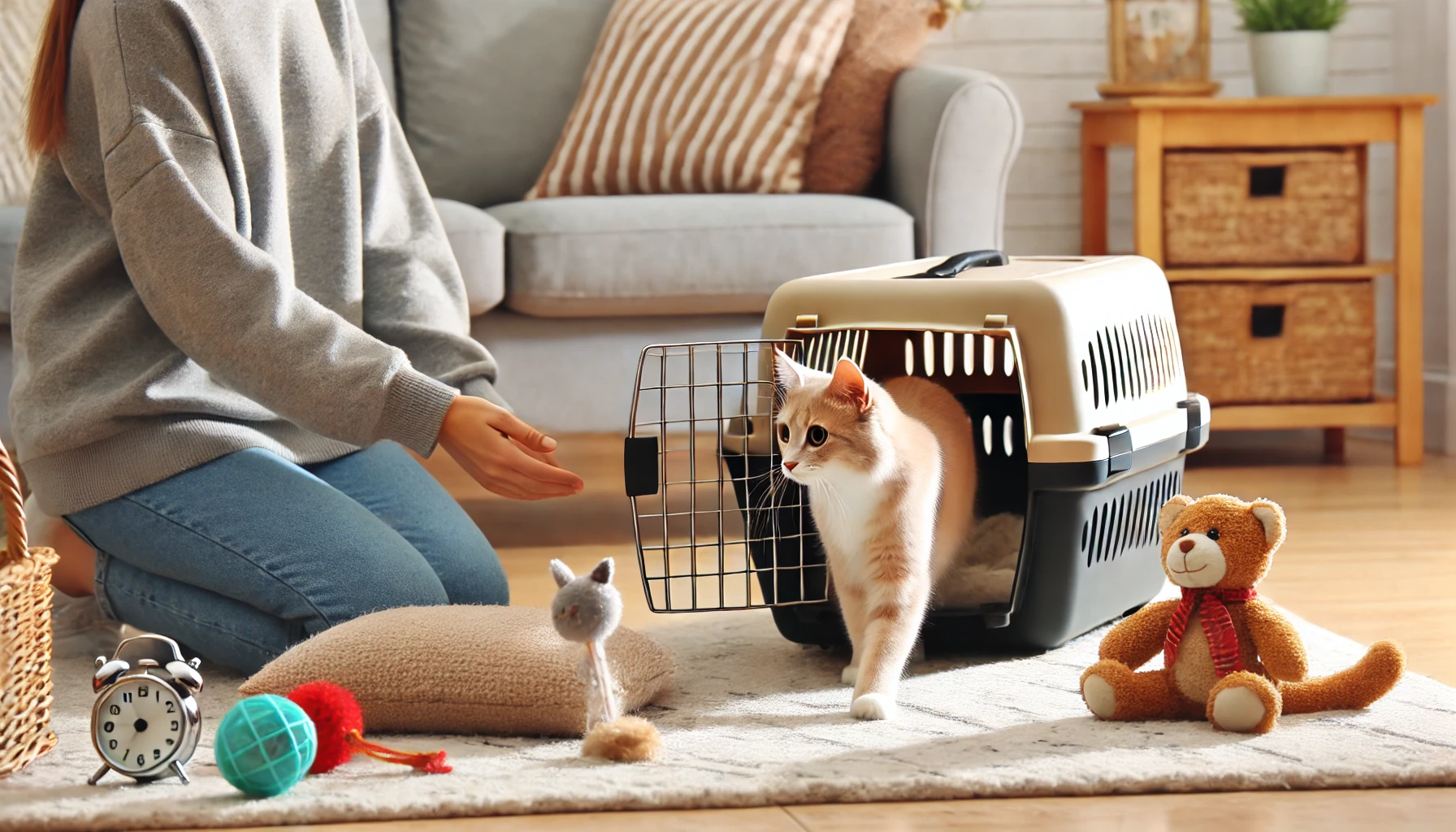
Helping Your Cat Adjust to a New Environment
When traveling to a new location, your cat may need time to adjust to their new surroundings.
Cats are territorial animals and can feel insecure in unfamiliar places.
Help your cat feel comfortable by setting up familiar surroundings, such as their favorite toys, bedding, and a litter box in a quiet, comfortable area.
Allow your cat time to become familiar with the new environment at their own pace.
- Create a comfort zone: Set up a room with familiar items like their bed, toys, and litter box to help your cat feel more at ease.
- Give them time: Allow your cat to explore the new environment at their own pace without rushing or forcing interactions.
- Stick to a schedule: Maintaining a consistent feeding and play routine will help your cat feel more secure in the new space.
A calm and familiar environment will help your cat adjust more easily to their new surroundings after travel.
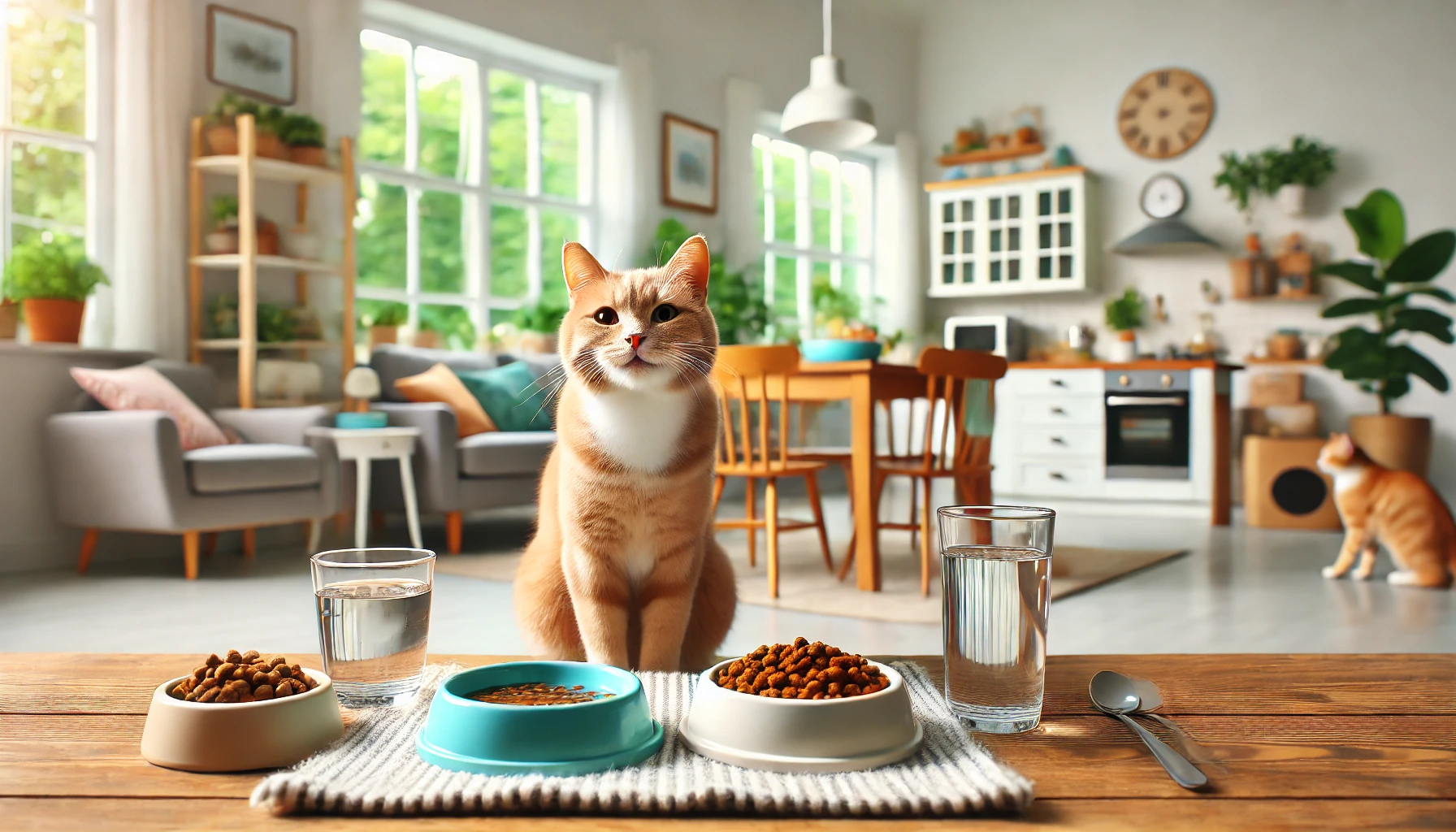
Hydration and Nutrition After Travel
Travel can dehydrate your cat, especially if they didn’t drink much during the journey.
It’s essential to encourage your cat to rehydrate as soon as you arrive.
Offering fresh, clean water in multiple locations around your home can encourage your cat to drink.
Additionally, monitor their food intake, as stress may cause them to eat less than usual.
- Offer fresh water: Provide fresh water in several locations around your home to encourage your cat to drink.
- Monitor food intake: Ensure your cat is eating regularly and not refusing food after the trip.
- Hydrating foods: If your cat seems dehydrated, offer wet food or add a small amount of water to their dry food to increase fluid intake.
Rehydrating and ensuring your cat maintains a healthy diet after travel is essential for their recovery and overall well-being.
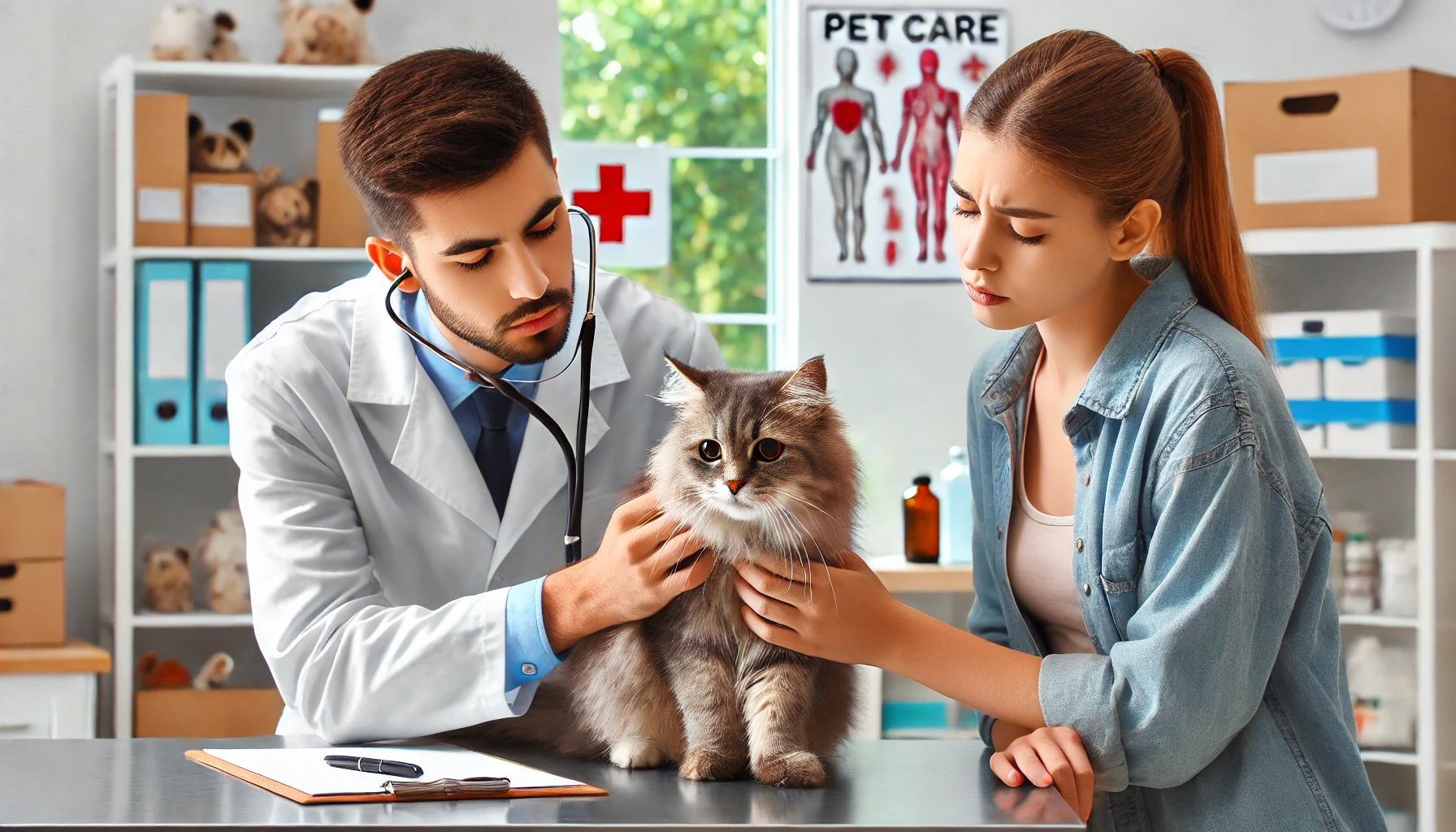
When to See a Veterinarian After Travel
While most cats recover from travel stress on their own, some may need veterinary attention if their symptoms persist.
If your cat shows signs of illness such as vomiting, diarrhea, persistent lethargy, or unusual behavior lasting more than a few days, it’s a good idea to consult your veterinarian.
Travel can sometimes exacerbate underlying health conditions, and your vet will be able to assess whether further care is needed.
- Persistent lethargy: If your cat remains lethargic for more than two days post-travel, contact your veterinarian.
- Gastrointestinal issues: Vomiting or diarrhea lasting longer than a day may indicate a more serious issue.
- Changes in behavior: If your cat’s behavior remains unusual or stressed for several days, it’s worth consulting a vet.
Timely veterinary care can help address any post-travel health issues and ensure your cat recovers fully from the journey.
Monitor your cat for signs of stress or illness after travel, such as lethargy, changes in appetite, or excessive grooming.
- Provide a calm environment for your cat to adjust to the new surroundings.
- If signs of stress persist, consult your veterinarian.
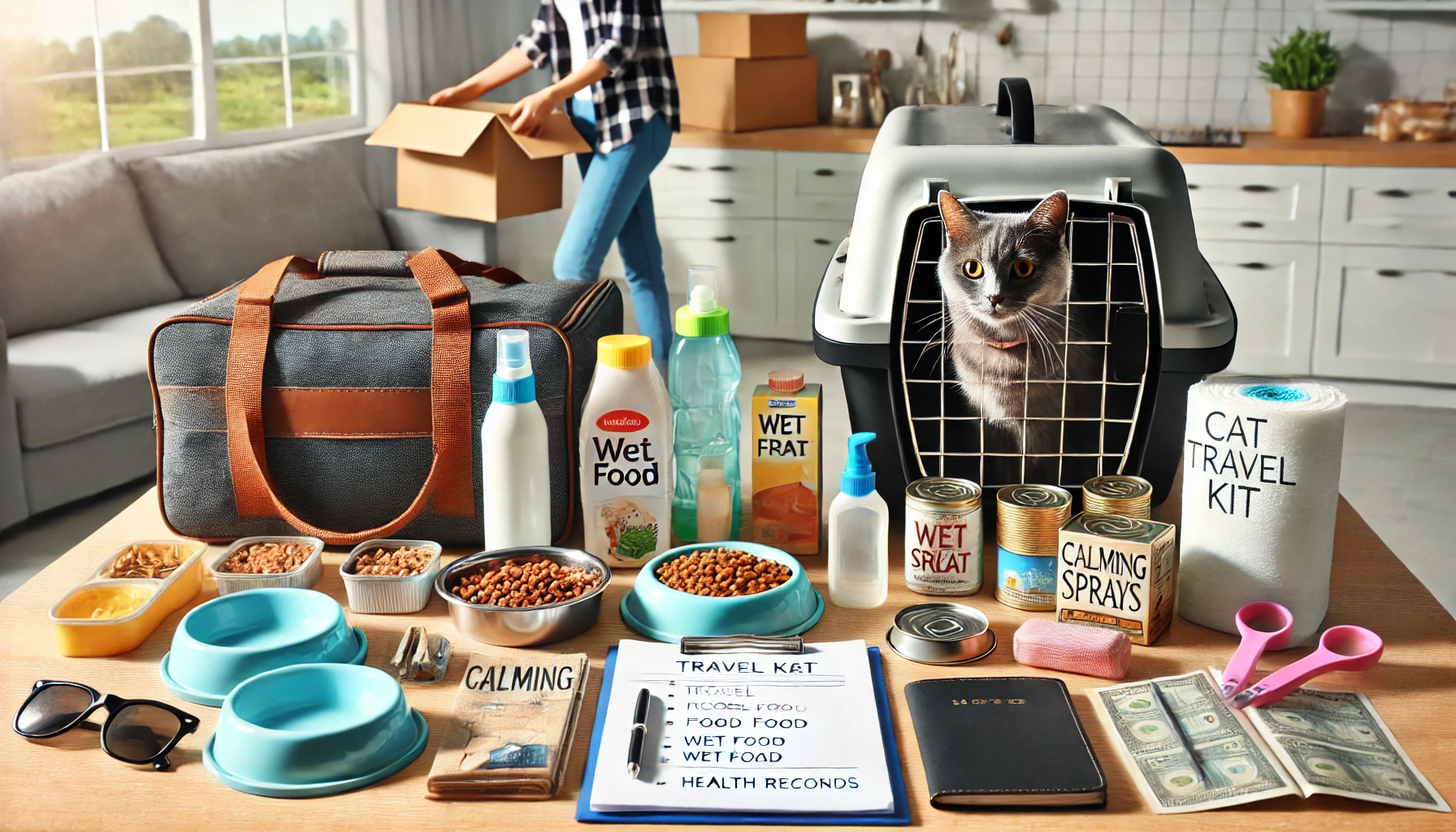
Caring for Your Cat’s Health When Traveling: Important Facts
Traveling with your cat can be quite gratifying, but it also comes with challenges, especially when it comes to maintaining your cat’s health and comfort.
Whether you’re embarking on a road trip or flying to a faraway destination, prioritizing your cat’s well-being will ensure that the journey is smoother for both of you.
In this guide, we’ve covered critical methods to help manage cat health during travel, from the pre-travel stage to post-travel care.
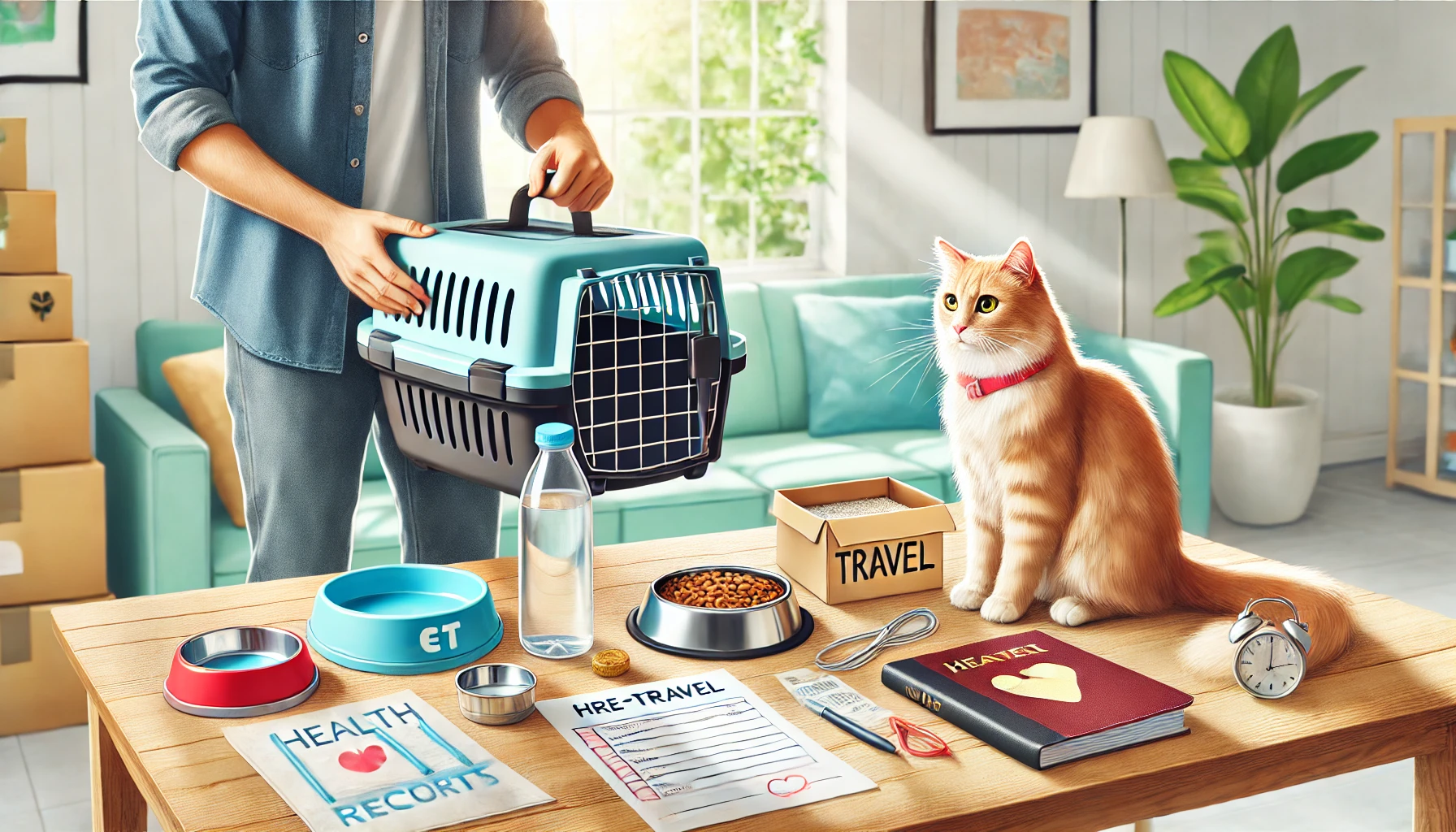
The Pre-Travel Preparations are Paramount
Your cat’s health begins with good preparation.
A visit to the veterinarian before the trip is essential to ensure your cat is fit to travel and that vaccinations are up-to-date.
Equally important is choosing the right travel carrier, ensuring comfort, safety, and proper ventilation.
A well-prepared travel health kit, including food, water, and any necessary medications, completes the essentials for a safe trip.
- First, schedule an appointment with a vet well in advance of the trip to update vaccinations and confirm your cat’s health status.
- Choose a comfortable, well-ventilated carrier that meets the requirements of your airline or mode of travel.
- Prepare a travel health kit with food, water, medications, and any calming aids your cat may need.
Long journeys, whether by road or air, can be exhausting for your cat.
Managing motion sickness, ensuring your cat stays hydrated, and allowing them regular breaks to stretch and use the litter box are essential.
Using calming sprays or veterinarian-recommended sedatives can significantly reduce travel stress and make the experience more enjoyable for both of you.
- Feed your cat light meals before the trip to prevent motion sickness.
- Ensure regular water breaks, especially during long-distance drives, to keep your cat hydrated.
- Consider calming sprays or sedatives recommended by a vet to ease travel anxiety.
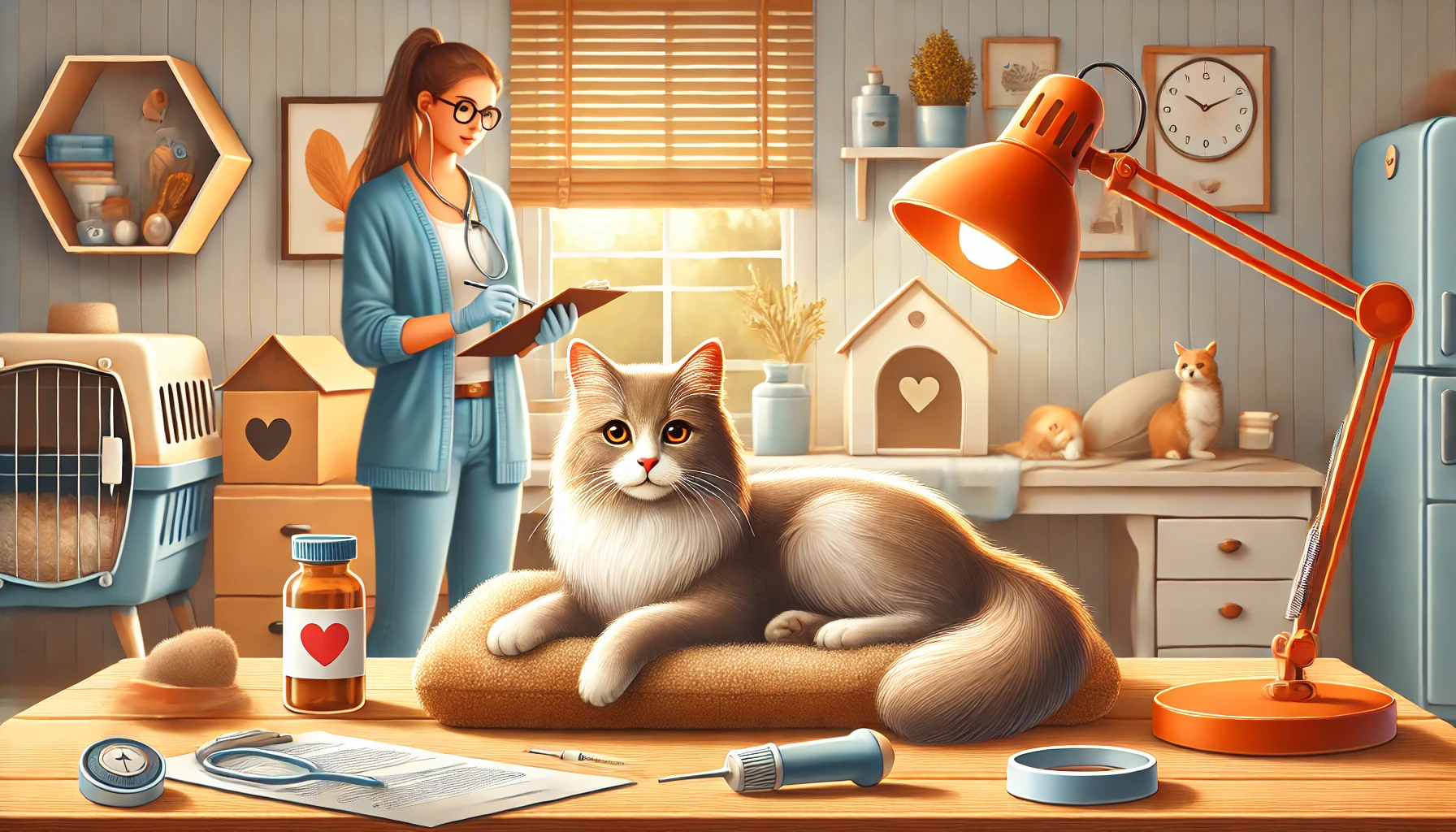
Post-Travel Recovery and Health Monitoring
After the journey, it’s important to closely monitor your cat for any signs of stress or illness.
Travel can be physically and emotionally tiring for cats, so allow them time to adjust to their new environment.
Provide plenty of fresh water and food, and watch for any unusual behavior, such as lethargy, loss of appetite, or hiding.
In some cases, a follow-up visit to the vet may be necessary if symptoms of distress or illness persist for several days.
- After the trip, monitor your cat for signs of stress or illness, such as lethargy or changes in appetite.
- Help your cat adjust to the new environment by providing a quiet space with familiar items like their bed, toys, and litter box.
- If symptoms persist, consult your veterinarian for further advice and possible treatment.
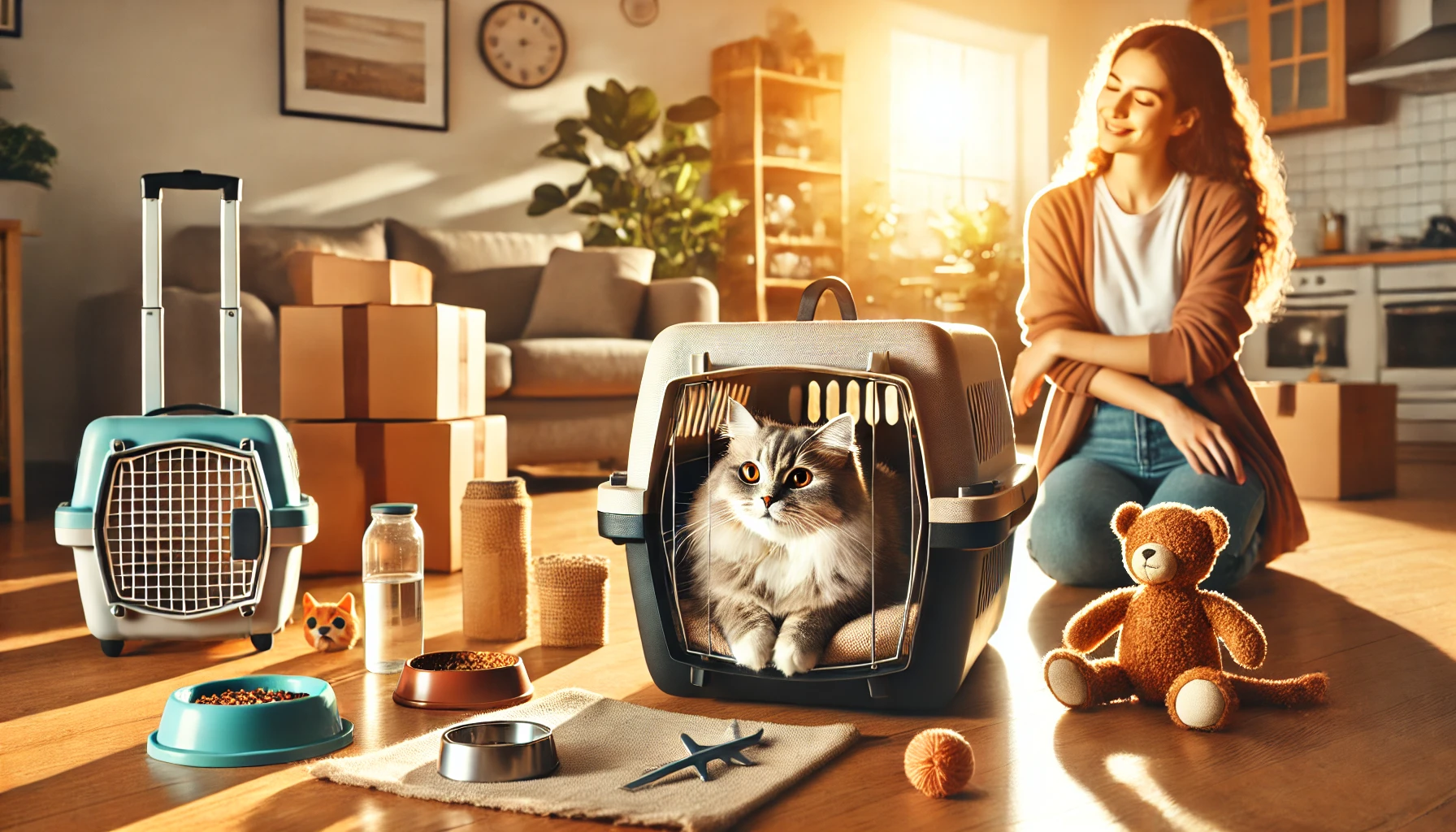
Final Thoughts on Managing Cat Health During Travel
Traveling with a cat requires thoughtful planning, patience, and attention to detail.
By preparing in advance and staying attuned to your cat’s health needs during and after the journey, you can ensure a more comfortable and less stressful experience for both you and your feline companion.
From pre-trip vet visits and selecting the right carrier to managing hydration and post-travel recovery, each step plays a vital role in ensuring your cat’s health and well-being.
With these strategies in place, you and your cat can enjoy a safe, healthy, and pleasant travel experience together.
Remember, your cat’s health and comfort should never be an afterthought when planning a trip.
With proper preparation and care, traveling with your feline friend can be a rewarding and enjoyable experience.
Prioritizing your cat’s health and comfort during travel ensures a safe and smooth experience.
- Plan pre-travel vet visits, choose the right carrier, and prepare a health kit for the journey.
- Manage stress and health issues during and after the trip for a better experience for both of you.

Frequently Asked Questions About Cat Health During Travel
Below are some of the most frequently asked questions about managing your cat’s health while traveling, covering common concerns about preparation, safety, and post-travel care.
How do I prepare my cat for a long drive?
Start with a vet visit, choose a comfortable carrier, and pack adequate food, water, and related medicines.
Acclimate your cat to the carrier over time, and take short rehearsal drives to minimize travel anxiety.
What should I include in my cat's health travel kit?
Your cat’s travel health kit should include water, food, medications, a portable litter box, and familiar items like favorite toys or blankets.
Consider adding calming aids and any medications recommended by your vet to ease travel stress.
How can I minimize my cat's travel anxiety?
To reduce travel anxiety, use calming sprays and let your cat get used to their carrier before the trip.
Bring their own bedding for familiarity.
If anxiety persists, consult your vet about sedatives or anxiety medication.
What do I do if my cat refuses to eat following a trip?
If your cat refuses to eat after travel, monitor them for a day or two.
Offer familiar food in a quiet space.
If the issue continues alongside other concerning behaviors, consult your veterinarian for further advice.
How often should I stop en route with my cat?
On long journeys, stop every 2-3 hours to give your cat water, allow them to stretch, and provide access to a litter box.
Frequent stops help minimize stress and prevent dehydration.
Can I sedate my cat for flying?
Sedating your cat for flying should only be done under veterinary supervision.
Your vet may recommend sedation or tranquilizers based on your cat’s anxiety level, but this should be used with caution and only if absolutely necessary.
What signs of stress should I look for after travel?
Lethargy, hiding, changes in appetite, and excessive grooming are common signs of stress after traveling.
If your cat displays these signs for more than a day or two, consult your veterinarian for advice.

